| Pyramid QSR | Pyramid Computer | polytouch ® is the ultimate interactive kiosk solution for various industries and application areas for product presentation, independent processing of purchase processes and as an information terminal. Its individual and flexible application possibilities make the system a competitive advantage thanks to its first-class touch technology. Also, the ultrasound-based localization system PLS. With a precision of 15 cm, it is 10 times better than systems based on WLAN, Bluetooth or RFID technologies. In addition, PLS works with any standard smartphone. For users without a smartphone, low-cost mobile ultrasound transmitters - so-called pucks - are available as an alternative. | enclosures |
| Olea Kiosks | http://www.olea.com | Award-Winning Interactive Kiosks - Olea Kiosks has been building award-winning kiosks for over 40 years. Contact Olea today learn more! | enclosure, design |
| Nanonation | http://www.nanonation.net/ | Nanonation – Offering world-class solutions in interactive, digital signage, and transactional kiosks. Nanonation leverages 18 years of experience and an award-winning creative team to produce reliable and compelling public space solutions for multi-national corporations and small businesses alike. | software |
| Vispero | https://tpgi.com | Vispero is the world’s largest assistive technology provider for the visually impaired. Although officially formed in 2016, our brands Freedom Scientific, Enhanced Vision, Optelec, and The Paciello Group, share a long, rich history as industry leaders dating back to 1975. | consulting, ada, accessibility |
| KIOSK Information Systems | http://kiosk.com | KIOSK leads the self-service industry in a full complement of vertical markets, providing niche expertise in both hardware and software platform creation, volume deployment support, and complete field / managed services. OEM and end customer projects range from traditional applications in retail, bill payment, lockers, and government to border security and gaming solutions. With over 200,000 units successfully deployed and 25+ years entirely dedicated to the art of self-service, KIOSK has the passion, expertise, and resources to greatly simplify your path to market. | enclosures, hardware, software |
| KioskGroup | Tablet Kiosk Stands | http://www.ipadkiosks.com | Providing complete tablet kiosk systems from high-quality, ADA-compliant enclosures & stands to easy-to-use kiosk software. Backed by a full 3 year warranty! | enclosures, tablets |
| 22Miles Digital Signage Software | https://www.22miles.com | 22Miles is a digital signage software application for Wayfinding and much much more. Hundreds of projects in standard packages as well as custom packages. | software, digital signage |
| Intel Public Retail Kiosks | https://www.intel.com/content/www/us/en/retail/retail-kiosks.html | –Give a Unique Customer Experience. Improve the shopping experience and reduce TCO with retail kiosk solutions covering in-store digital destinations, intelligent shelving, and more. | kiosks |
| LG Business Solutions | https://www.lg-informationdisplay.com/dc | LG Electronics has already spearheaded in the fields of electronics, communication equipment and home appliances. In the digital signage field, which has been developed since 2012, we have strengthened our leading position in providing the most innovative products in the world. Digital signage solutions are designed with a focus on a deep understanding of industries, and customer convenience. Integrated solutions ranging from content management, service to maintenance are delivered. | |
| Acquire Digital | More Than Just Digital Signage Software | http://www.acquiredigital.com | We produce and develop digital signage software and content management
systems. With solutions for interactive maps and wayfinding software
solutions. Located in Leicester, UK. | software |
| Sitekiosk Kiosk Software | http://www.sitekiosk.com | SiteKiosk™ is a kiosk software for Windows to lock down public access Devices. It secures the browser and operating system. Free Trial Version. | software |
| Dolphin Computer Access | https://yourdolphin.com/en-gb/supernova-kiosks | World-leading magnification and screen reading software to make your self-service kiosks accessible to people with visual impairments. | |
| Alpine Kiosk | https://www.alpine-kiosk.com/ | Create versatile self-service kiosks for checkouts, check-ins, ticketing, payments, signage, and more with Alpine Kiosk. Design on our platform, connect with AV integrators and partners, and elevate your customer experience across retail, healthcare, hospitality, and other industries. Explore now. | |
| Ingenico Kiosk | https://kioskindustry.org/kiosk-about/charter-members/ingenico/ | Ingenico | |
| Advanced Kiosks | http://www.advancedkiosks.com/ | Advanced Kiosks is one of the largest touch screen kiosk suppliers in the United States. Our computer kiosks are made in the USA. Whether you need a Check-In Kiosk, Survey Kiosk, Trade Show Kiosk or Self-Service Kiosk, we have a solution for you. | enclosures, hardware |
| Entropy Cabinet Solutions | https://www.ecsentropy.com/ | Entropy Cabinet Solutions Co., Ltd manages all aspects of product development through years of experience and industry knowledge. The ECS team consists of product design, prototype and manufacturing experts. | |
| imageHOLDERS - Tbalets & kiosks | http://www.imageholders.com/collections/pos-tablet-kiosks-stands | Secure EPOS and MPOS Tablet and iPad Stands & Kiosks ideal for retail outlets looking for contactless payment. Can be fully customized to your brands. Find out more! | |
| RedyRef | http://www.redyref.com/ | RedyRef provides touchscreen kiosks, building directories, custom software and more for establishments of all sizes. Upgrade user experience today! | enclosures, hardware |
| ACRELEC Technology that drives your business forward | https://acrelec.com | Acrelec is a global technology company focused on reinventing the customer experience for restaurant and retail brands. Leveraging decades of software, hardware and service expertise, we develop and integrate new platforms that increase customer engagement, optimize efficiency and improve operations. Our 1100 employees around the globe collaborate with our customers and partners to design, create and build the world’s leading smart stores. Never satisfied with the status quo, our passion is in delivering breakthroughs that drive business results. | |
| EasyPay System | https://easypaysystem.ro/en/home/ | Self-service kiosks for maximum efficiency – intelligent automation of transactions, orders and services for any industry. | |
| Crane Payment Innovations (CPI) : Homepage | http://cranepi.com | We design and manufacture high performance payment solutions for Gaming, Retail and Kiosk, Transportation and Vending applications across the globe.
Crane Payment Innovations (CPI) is the combination of Crane Payment Solutions and MEI Conlux Holdings (“MEI”). CPI, along with Crane Merchandising Systems, forms the Merchandising Systems business segment of Crane Co., a diversified manufacturer of highly engineered industrial products. CPI serves over 100 countries, and has one of the world’s largest installed base of payment systems.
The strategic focus of CPI is to provide a full range of high quality money handling solutions, aimed at the financial services, gaming, retail, transportation and vending markets. Drawing on decades of heritage and expertise from the NRI, CashCode, Telequip, Money Controls and most recently MEI and Conlux brands, our team develops core validation technology to provide a range of payment systems and associated products with high security protection. | hardware, cash, coin |
| SKG Manufacturing | Metal Product Manufacturing | http://www.skgmanufacturing.com/ | As a full service metal parts supplier, SKG Manufacturing provides quality, cost-effective metal parts to a wide range of customers across a multitude of industries, while providing them with industry-leading service and a headache-free experience. | |
| KT Group | https://www.kioskterminals.eu/ | Discover our range of kiosk solutions, empowering you to deliver exceptional customer experiences. For sports betting terminals, trust KT Group. | |
| meldCX - Book a Demo | https://www.meldcx.com/ | Create premier customer experiences through AI and intelligent edge technologies. | |
| Giada Technology | Professional Digital Signage Media Players | https://www.giadatech.com | Giada is the world's leading manufacturer of embedded computers; we can provide you with digital signage players, edge computers, OPS/SDM, motherboards and etc.
[email protected] | |
| URway Holdings | http://www.urwayholdings.com | URway Holdings is a group of dynamic companies dedicated to providing unique solutions for our expanding and evolving digital ecoSystem.
Our core companies, including OneSource, EuroTouch, URway Kiosks and PicsWare, specialize in unique interactive, self-service kiosks, interactive and passive dynamic displays/signage, dynamic digital directory & wayfinding displays, mobile/tablet application integration, and managed digital services. Together we provide "Turnkey Solutions for Today's Connected Digital World". | hardware, enclosures, digital signage, outdoor |
| NZ Technologies Touchless Interaction | https://www.nztech.ca/ | Experience the future of touchless technology with our innovative solutions. Our user-centric approach ensures intuitive and practical products for medical and industrial sectors. Discover contactless solutions, gesture-based interfaces, and custom touchless technology designed to streamline your processes. | |
| Innovative Technology | https://www.innovative-technology.com/ | A leading provider of cash handling technology we enable businesses across the world to handle coins, notes and tickets more efficiently, reducing cash related security risks and improving their customers' experience. As an innovation-led global technology company, we research and develop a broad range of state of the art cash handling products for the gaming, amusement, vending, retail and kiosk markets. With over 25 years’ experience, we have grown to become one of the leading providers of cash handling technology in the world; manufacturing banknote validators, banknote recyclers, multi-coin hoppers and ticketing products that handle millions of transactions every day for some of the world’s leading companies. We have a growing international presence with commercial operations across the globe, two manufacturing sites, a rapidly expanding R&D centre and a network of over 20 trading partners. | cash, biometrics, currency, coin |
| LG-MRI :: BoldVu Outdoor Digital LCD Displays, Indoor Digital Displays, Drive-Thru Kiosks | http://lg-mri.com/ | MRI is the industry leader in Indoor and Outdoor Digital Displays and Arrays. The BoldVu series offers SAM (service access module), SureVu (digital image verification), CoolVu (thermal management system) and more. | outdoor, displays |
| FEC Kiosks | https://www.fecpos.com/KS-3682W.html | 01 Self Service, Optimize queuing and improve efficiency Scan Print Payment Counter ... | |
| UCP EMV compliant card payment solutions | http://ucp-inc.com/ | Unattended Card Payments Inc (UCP Inc) is dedicated to providing EMV compliant Hardware and Payment Gateway solutions for Unattended card payment terminals in the US market. | hardware, pos |
| POSBANK | https://www.posbank.com | Custom POS & Self Service Kiosk Manufacturer | |
| Datacap Systems, Inc. | https://www.datacapsystems.com/ | Datacap Systems develops integrated payment interfaces for any type of
Point of Sale Application (PC-based, Embedded, Mobile, Cloud). | |
| NMI Integration | https://www.nmi.com | Learn how to best support your business with NMI's embedded payment solutions. Integrate secure payments to create a smooth transaction experience. Read now!
NMI is a leading payment gateway and technology provider in the fintech industry. Founded in 2001, NMI offers a comprehensive suite of payment processing solutions for businesses of all sizes. Their platform enables secure transactions across multiple channels, including e-commerce, mobile, and in-store payments. NMI’s white-label solutions allow partners to customize and brand payment services, enhancing their offerings to merchants. | |
| Storm Interface | http://storm-interface.com | Storm Interface for all your rugged keyboards, input devices and assistive technology for ADA | devices, ada |
| Tech for All Consulting Accessibility | http://www.tfaconsulting.com/ | Experts in the application of Accessibility and Universal Design principles for Information and Communication | ada, consulting |
| dot inc. -- Blind Assistive Technology | https://www.dotincorp.com/ | Dot Incorporation has blind assistive technology products, blind assistive technology products in Korea. Dot aims to expand this mission to include the transportation vulnerable and the mass public by leveraging our award-winning inventions and patented technologies. | |
| Honeybee KIOSK - Intelligent unattended solutions | https://honeybeekiosk.com | New kiosk company offering transactional payment terminals on wide range of platforms. Including iPad, Android, Samsung and Team Sable POS. The Honeybee Kiosk solution provides path for Small and Medium Business. You get application and SKUs with all the usual integrations starting at $29.99 a month. Super plan is $69.99. Why sign up with TOAST when Honeybee is much better.
A versatile, user-friendly self-service solution designed for financial services, retail, and restaurant environments. It supports a wide range of digital transactions and is scalable for both small businesses and large enterprises, with white label and web hook options.
[email protected] | |
| DPL Wireless | https://www.dplwireless.com | DPL engineers wireless modems and security products purpose built for use in ATMs and is an end-to-end managed wireless service provider. Upgrade with confidence when you choose DPL's Hercules platform for your 3G upgrades. | |
| Self-Service Networks | http://www.self-servicenetworks.com | Helps business empower customers™ with secure, unattended transaction solutions. Retailers, financial institutions, governmental agencies and healthcare providers have entrusted Self-Service Networks to help them grow product distribution when a staffed location is not possible or economical. | software, giftcards |
| WelcomeWare | Your Virtual Front-Desk Receptionist Platform and Kiosk | https://www.welcomeware.live/ | WelcomeWare allows your receptionists to work from home and simultaneously cover multiple locations. Customized solutions for every market. | |
| Insight Touch - Touchscreen Provider for North America | http://www.insight-touch.com | Touchscreens from small 10' to large 98' and PCAP touch technology. We can tailor screens for hi-brite, open-frame or complete touchscreens. | touchscreen |
| Boca Systems - Ticket Printers, Kiosk Printers, Thermal Tickets | http://bocasystems.com/ | The Leading Manufacturer of Thermal Ticket Printers, Kiosk Printers and Thermal Ticket Stock | printers, hardware |
| Kiosk Innovations | http://kioskinnovations.com | Kiosk Innovations manufacture interactive kiosks, design and fabrication of standard kiosks, custom kiosks and digital signage kiosks. | enclosures, hardware |
| Alveni | http://www.alveni.com/ | At Alveni, our mission is to plan, develop, and deploy strategic business solutions using the best in self-service, interactive technology. | hardware, enclosures |
| Systech Braille Labels | http://www.systechdisplays.com/ | We specialize in custom signage for banks & ATM refurbishment and keycard insert sets. We offer airport kiosk signage and sunlight readable aircraft filters. All our products are manufactured in the USA at our state-of-the-art facility in Northern California. | |
| XPCC Power | https://xpcc.com | Xtreme Power, a global provider of power quality solutions, is dedicated to providing the most reliable power protection for mission critical applications. | |
| Pyramid Technologies | https://pyramidacceptors.com/products/phoenix-printer | The Phoenix thermal printer incorporates these aspects to bring you a true
difference maker. Designed for gaming, kiosk, amusement and anywhere a
printer is needed. Make the easy decision today and enjoy all the benefits
that Phoenix has to offer. | |
| TDS Touch - Large Size Digital Signage | http://www.ustdstouch.com/ | TDS TOUCH makes touch screen, touch monitor, touch computer; we are the Manufacture; we provide customized touch display products; | |
| Actineon - Purpose Built Computing | https://www.actineon.com/ | Actineon is the market leader in high-performance and customizable computers for kiosks, micro-markets, edge, digital signage, AI, virtual medicine, and research. Beyond customization, Actineon can offer full stack development - incorporating expertise from all required engineering disciplines, including systems, software, electrical, electronics, mechanical, industrial, manufacturing, and test. Global sourcing, a broad and deep supply chain, and multi-sourcing allow Actineon to ship products with minimal lead times. We offer solutions integrating the latest technology that provides value to the healthcare and IT industry. | |
| Identiv is a global provider of physical security and secure identification. | https://www.identiv.com/ | Identiv is a global provider of physical security and secure identification, building smart identity and access solutions for physical, smart card, and RFID technology. | |
| Ventus | http://www.ventusnetworks.com/ | Ventus offers over 20 years of experience as the industry leader in enterprise class networking and IT solutions. We are a global wireless and fixed-line connectivity, hardware, and software company delivering customer-centric innovation that leverages technology to produce market-driving solutions. Serving the world’s largest companies, our business divisions often overlap to meet a wide range of enterprise IT and networking needs. | hardware |
| VidaBox iPad, Android enclosures, kiosks + USB POE CAT5 Chargers | http://www.vidabox.com/kiosks/ | iPad & Android enclosures w wall, tabletop, VESA, & floorstand / pedestal mounting options + USB power chargers. Ideal for retail, commercial, tradeshows, more. | hardware, tablets |
| Peerless-AV Digital Signage Outdoor | https://www.peerless-av.com/en-us/professional | We proudly design and manufacture the highest quality products,
ranging from outdoor displays to complete kiosk solutions, digital
signage mounts to wireless systems. | enclosures, digital signage, outdoor |
| Deployment Logix | https://www.DeploymentLogix.com | Logistics and deployment services | services |
| 10Zig Thin & Zero Client | https://www.10zig.com/ | 10ZiG is a world market leader in Thin Clients & Zero Clients for VDI. Our units are certified for Citrix, VMware and Microsoft and support the latest protocols. | |
| Solutions | Kodak Alaris | https://imaging.kodakalaris.com/retailers/solutions | Kodak Moments is your one-stop photo shop. From passport ID photos to prints and personalized photo decor, your consumers can print it all in just minutes. | |
| dot inc. Blind Assistive Technology | http://dotincorp.com | Dot Incorporation has blind assistive technology products, blind assistive technology products in Korea. Dot aims to expand this mission to include the transportation vulnerable and the mass public by leveraging our award-winning inventions and patented technologies. | |
| Topwise | | Demi Chen
Sales Manager [email protected]
Retail Business Division
Mobile: +86 184 7510 8102
www.topwisesz.com | |
| KMA | https://kma.global | Welcome to the Kiosk Manufacturer Association. We are many companies all focused on self-service be it unattended, semi-attended or attended self-service. | association |
| Patient Kiosk Check-In - Healthcare Kiosk for Patient Check-In | http://patientkiosk.io | Patient Kiosk website provides information on healthcare kiosks used for patient check-in. News and benefits for healthcare kiosks used for check-in. | |
| Lazenby Group UK Kiosk Solutions | https://www.lazenbygroup.co.uk/ | We were one of the first organisations to design and manufacture high quality modular, customizable, self-service kiosk solutions. From our base in Hull, East Yorkshire, we employ a skilled and experienced team of 3D product designers, sheet metal fabricators, kiosk manufacturers and specialist composite panel bonders. We take pride in the quality of our innovative manufactured solutions and are recognised as market leaders. | |
| We’re pushing the boundaries of human-computer interaction by integrating cutting-edge voice recognition technologies... | https://codefactoryglobal.com | Our mission is to make technology more intuitive for everyone. By harnessing the power of Cerence’s state-of-the-art speech technologies, we’re able to create voice experiences that are not only robust in challenging conditions but also customizable to cater to users’ individual needs. From smart devices to self-service kiosks, we’re revolutionizing the way people interact with technology, making it easier, more efficient, and inclusive. At Code Factory, we believe that the future is voice. | software |
| PresTop | https://www.prestop.com/ | We offer innovative, interactive high-end touch solutions to the European market from our headquarters in Son en Breugel in the Netherlands. Prestop has built up a reputation in interactive media and are proud that our clients include powerful international brands. | europe, kiosk |
| Evolis | A global leader in badge and card printers solutions | https://www.evolis.com/?src=kioskindustry | Evolis, global leader in badge and card printer solutions, designs, manufactures and sells plastic cards and ID badges printers. | |
| TSItouch large format touch overlays | http://www.tsitouch.com/ | TSItouch is a US-based technology company manufacturing touch screens, bezels, monitors and protective overlays. | touchscreens, displays |
| RedyRef | http://www.redyref.com/ | | enclosures |
| Payment Kiosk | https://paymentkiosk.com | Designing self-service payment kiosk solutions for purchase, lease or revenue share placement. Hardware, software and service. | enclosures |
| AXIOHM, the architects of your thermal printing solutions | http://www.axiohm.com/ | AXIOHM is a leading manufacturer of thermal printing solutions and develops and manufactures a large range of thermal receipt and POS printers, thermal printer mechanisms, kiosk printers and OEM printers sold worldwide. | printers |
| IDmission | Biometric Security and Authentication Software | https://www.idmission.com/ | IDmission is the leading provider of lifecycle identity management solutions, eliminating risk associated with false identities for customers and employees across the globe. | |
| Keyser | Digital Signage Solutions | https://www.explorekeyser.com/ | Keyser is a global digital signage company with more than 50 years of expertise delivering digital signage products, installation and maintenance services. | |
| Accushield | https://www.accushield.com/ | Health screening kiosks | |
| Esper Android | https://esper.io/ | Esper is the most reliable platform for deploying and managing apps on a dedicated device fleet | software |
| Minute Key Copy Kiosk | https://www.minutekey.com/products/kiosk/ | Need to duplicate a key for your car or home? Our self-service kiosks allow you to easily copy keys within minutes. | key |
| SUZOHAPP OEM | https://oem.suzohapp.com/markets/kiosk/ | Simplify your sourcing with our broad product range, local resources, and global capability SUZOHAPP is a technology company with over 50,000 products for vending, ticketing, parking, kiosk, self-service and automat OEMs and operators. Products include LCDs, cash and cashless components, buttons, printers, scanners, locks, lighting and cabinet parts for both indoor and outdoor operation. SUZOHAPP is also a leading software and hardware supplier of complete cash management solutions typically found anywhere from cashier workplaces to large-scale back office operations. SUZOHAPP is a global company with offices in 19 countries serving over 25,000 customers with regional delivery, local support and quick customization. Select a product category to get started! | |
| Panel Brite Sunlight Readable Displays and Solutions | Sunlight Readable Displays and Solutions | http://www.panel-brite.com/ | Sunlight Readable Displays and Solutions | Sunlight Readable Displays and Solutions. Our Open Frame displays are the perfect “drop in” solution for open-framekiosk, digital signage and a diversity of other applications. These units include our high bright displays and all components integrated into a metal enclosure. | displays, touchscreens, outdoor |
| DynaTouch | http://www.dynatouch.com | DynaTouch provides self-service solutions. Creator of TIPS Kiosk Software, used by government & commercial kiosk clients worldwide. We are a tightly-knit team of software developers, programmers, problem solvers, engineers, hardware specialists, graphics artists, content designers, project leaders, and customer service professionals. We have an unmatched reputation for not only developing top quality products, but for being responsive, easy to work with, and for standing behind all aspects of our work. Our mission is to focus on cost-effective solutions for our customers without sacrificing quality, and we conscientiously honor our commitments. | software |
| Digital Business - Kiosk Consultant and Self-Service Consulting | https://digitalbusiness.us | Our group consists of multiple individuals across the world providing top tier kiosk consulting and consultants in the self-service world. | consulting |
| Elo Touch Solutions | http://www.elotouch.com | Elo Touch Solutions designs, develops and manufactures touch products and technologies for industrial, medical, retail, hospitality, transportation, automotive, office automation and gaming applications. | touchscreens |
| Intuiface: Next Generation Interactive | https://www.intuiface.com | Intuiface is the world’s premier platform for creating, deploying, measuring and managing deeply interactive digital experiences for kiosks without writing code. Over 1400 companies across 90+ countries are connecting people to place using interactive options such as touch, RFID/NFC, beacons, Web APIs, Internet of Things, and much more. | software |
| FEC | http://www.fecpos.com/en-global | (Firich Enterprises Co., Ltd.), founded in 1995, is a worldwide leader in POS systems generating solid and consistent growth. With dynamic POS expertise in hardware design and manufacturing, FEC provides a full range of POS products, including all-in-one touch terminals, box PCs, monitors as well as related peripherals. In addition, FEC provides KIOSK related products and services. | pos, hardware |
| Lirsen | https://www.lirsen-tech.com | Explore our wide range of high-quality products
Established in 2008, Shenzhen Lirsen Technology Co., Ltd. has been developing and manufacturing LCD & LED related products since 2008. During these years, we have developed our own LCD & LED related products, such as Advertising Player, All In One Computer, Touch All in One, Video Wall, Touch Screen Monitor, CCTV Monitor, LED Display, etc., ranging from 7 inch to 86 inch.
Our main products are used for indoor advertising and broadcasting, including wall mounted model, floor standing model, bus & train hanging model, KIOSK model, etc. | |
| OTI Global Card Readers | https://www.otiglobal.com/cashless_payment_systems/otikiosk/ | OTIKiosk – One-Stop-Shop Cashless payment acceptance and remote management solution for Kiosks and Self-Service Environments, OTIKiosk provides kiosk system developers with an easy and affordable way to integrate a pre-certified EMV payment acceptance solution for operators with remote management for hardware and software. | components |
| Nanoptix – Thermal Printers | http://nanoptix.ca/ | Thermal ticket and gaming printers for gaming industry and kiosks | printers |
| Star Micronics | http://www.starmicronics.com/ | Star, the leader in the POS printer market has a full line of thermal, dot matrix, receipt, label/bar code and mobile printers for POS along with wireless cash drawers and accessories for POS and Customer Engagement Solutions. | hardware, printers, pos |
| Panasonic ClearConnect Restaurant Solutions | https://na.panasonic.com/us/clearconnect/kiosk-solutions | Enhance that customer experience
Why should your customers have to wait in line to place their orders when they can do it themselves? Kiosks can decrease those annoying wait times and create a better customer experience… and that translates to repeat business.
Operational Efficiencies & increased revenue
With the ability for customers to place their own orders through a kiosk, you have the ability to shift labor to other essential tasks, better handling peak times, and even increasing revenue an average of 30% per check. | |
| Marathon Deployment - Marathon Deployment | http://www.marathondeployment.com/ | Marathon provides a full range of services in Information Technology focusing in the areas of Deployment and Field Service. We serve clients in the retail, hospitality and business services verticals, globally. Our clients depend upon us to deliver quality and value as well as sophisticated and effective deployment solutions. | service |
| Pitney Bowes | https://www.pitneybowes.com/us/business-services/managed-services.html | Maximize your ROI via installation, deployments, service and monitoring | |
| Touch Dynamic | All in One Touch Computers, Touch Monitors, PCs | https://www.touchdynamic.com/ | Touch Dynamic is a leading manufacturer of all-in-one touch computers, touch screen monitors, small form factor PCs, mobile POS and receipt printers. | aio |
| KioWare - Secure Kiosk Browser | https://m.kioware.com | Originally developed to secure devices running the Windows operating system, KioWare has established a robust Windows following and a long list of supported external devices for use on the Windows Platform. The popularization of the tablet and the rise of the Android operating system led to the 2012 release of the KioWare for Android product line. KioWare comes with built-in EMV support. | software |
| SapientX - Leaders in Voice A.I. and Avatars | http://www.sapientx.com | [Overview] (https://www.youtube.com/watch?v=RZqJIDBmfLU&feature=youtu.be)
[Voice 22] (https://www.youtube.com/watch?v=mS8f1g5dkKY)
[Keiko in Motion] (https://www.youtube.com/watch?v=9Z_MjbD8ees) | |
| Evolis | A global leader in badge and card printers solutions | http://www.evolis.com/?src=kioskindustry | Evolis, global leader in badge and card printer solutions, designs, manufactures and sells plastic cards and ID badges printers. | |
| MIMO Monitors | http://www.mimimonitors.com | Mimo Monitors, established in 2008, is a global expert and industry leader in small touchscreen monitors, displays, and tablets. Designed with a solutions-first approach, we believe in creating small footprint and high value displays that drive innovation and provide a seamless experience for digital signage, conference rooms, kiosks, point of purchase, point of sale, hospitality, retail, and more.
Centered in providing touchscreens with human touch, we put customer service first, offering personalized, direct communication and detail-oriented service to ensure client satisfaction. Focused on flexible and customizable solutions that are designed to fit the need, our touchscreens are intuitive to use, easy to deploy, and sleek in design, all while enhancing productivity and user experience. | hardware, touchscreens |
| EMSAR - On-Site Service & Support | http://www.emsar.com/services/on-site-service-support/ | EMSAR services are currently available throughout the US and parts of Canada. Our team of field service engineers have a high degree of technical competence. | |
| AAG Consulting | https://armstrongalliancegroup.com/ | AAG will bring experience and process to get your strategies and executional plans in place quickly and cost-effectively. Our work takes a sales perspective. In other words, we work with you to gain market traction, help secure proof of concepts and pilot agreements. All of which will pave the way for significant growth in your business. | consulting |
| Pye - kiosks and software lease option | https://mypyepos.com/ | Customizable self ordering kiosks for the restaurant and hospitality industry to improve the customer experience and sales efficiency while saving on costs. Giving businesses the tools and technology needed to thrive in today’s fast-changing world. | |
| Verneek | http://verneek.com | We are building the most helpful AI to augment human knowledge in everyday
life! | |
| CloudApper hrPad Employee Self Service Kisok | https://www.cloudapper.ai/ai-tablet-for-hr/ | CloudApper hrPad is an AI-powered employee self-service kiosk that transforms workforce management. Turn any tablet into a versatile HR tool for time tracking, PTO automation, geofencing, and shift management. With features like Face ID check-in, 24/7 AI HR assistance, and seamless integration with leading HR systems, hrPad enhances efficiency and employee satisfaction. Customize surveys, automate tasks, and reduce HR stress—all while saving up to 75% compared to traditional solutions. | self service kisok |
| General Touch Co., Ltd. | http://www.generaltouch.uk/ | General Touch Co., Ltd. is a leading provider of touchscreen, touchmonitor and All-in-one computer. With advanced, cost-effective touch solutions, General Touch is favored and recognized by global customers. | |
| TEAMSable | Expanding POSibilities | https://www.teamsable.com/ | Silicon Valley grown, we are experienced with the demands of commerce and business operation. Our products and service are crafted to minimize your day to day challenges. | |
| Touch Pay - Supermarket of payments | http://touchpay.ph/our-apm/ | TouchPay™ is the country’s only fully automated, real-time, stand-alone payment terminal that, in partnership with over hundreds of billers from utilities, telecommunications, ticketing, gaming, e-government, insurance and much more, offers the Filipino the ultimate convenience in bills management incorporating speed, safety, and security, 24 hours a day, 7 days a week.
If you’re tired of getting in line at the bank or the mall for paying up your bills, TouchPay™ is the best solution to cut time and effort. All of the services you can think of are available at your fingertips: from electric bills, to internet, to flight tickets and booking, to remittance, to loading stations. There’s no need to wait in line that feels like forever when you can pay via TouchPay™ – Easy. Secure. Convenient. | bill payment |
| Evoke Kiosks | http://www.evoke-kiosks.co.uk/ | Evoke designs and manufactures technologies to help you engage with your customers. Our digital solutions ensure that your customers receive a consistent welcome and purchasing experience. With our help, world-leading brands like McDonald’s have set the new norm in self-service implementation, and you can work with us to deliver your own in store Experience of the Future. | hardware, enclosures |
| ELATEC RFID | https://www.elatec-rfid.com/en-us/applications-fields/vending-and-ticketing | ELATEC solves the world‘s user authentication and access control challenges with the most powerful and flexible multi-technology RFID readers/writers available today. Our solutions are versatile, secure and address global standards. They can be easily tailored to meet individual business needs in partnership with our class-leading consulting service and uniquely dedicated support team. Our customers benefit from significant reductions in their inventory management, maintenance and lifecycle costs, while enjoying high-quality, carefree user experiences. | |
| OptConnect - Wireless Solutions | http://optconnect.com | OptConnect is North America’s leading provider of managed service wireless connectivity for ATMs, Kiosks, Digital Signage and other custom applications. OptConnect revolutionizes the way machines communicate, providing for fast and secure connectivity, cost savings, and greater reliability. OptConnect offers end-to-end managed service providing customers with the greatest level of service and uptime. | 3g, wireless |
| TokenWorks - IDWedgePro fills multiple computer forms with ID card data! | http://tokenworks.com | Tokenworks Inc. is the leading provider of ID scanning solutions in the USA and Canada. Age verification and mobile data capture devices. | hardware, scanning |
| Sunmi Android | https://www.sunmi.us | Working with software partners, SUNMI has served more than 1.5 million
active merchants in 100 subdivided industries with its products and
solutions. Being popular in payment acceptance, online order receiving
and printing, store management and other scenarios, SUNMI products
and solutions have won clients engaging in businesses large and small.
Find how SUNMI serves the world. | pos, kiosks, android |
| CountR GmbH | https://www.countr.de/ | Cash handling kiosks Germany | |
| Esper | Android DevOps Solutions for Dedicated Devices | https://www.esper.io/ | Take complete control of your Android device fleet, and tailor-make the ultimate customer experience. Leverage the agility of DevOps to iterate quickly, minimize breakage, and focus on innovation. | |
| SapientX conversational, wayfinding assistants for digital signage | | SapientX AI software powers life-sized, conversational characters that run in digital signage. They are in use to greet people at trade shows, give directions at airports and to act as brand ambassadors in retail locations. They also speak 40 languages, take any appearance and they can even measure user sentiment. Visit www.sapientx.com. See https://youtu.be/mS8f1g5dkKY | ai avatar |
| Practical Automation - Ticket Printing and Kiosk Printing Solutions - Home Page | http://www.practicalautomation.com/ | Practical Automation is a premiere manufacturer of kiosk printer and ticket printer solutions serving the global market for nearly 50 years | printers |
| Applova Self-Ordering Kiosk | https://applova.io/kiosk/ | Our [self ordering kiosks](https://applova.io/kiosk/) are designed to fit restaurants of all sizes. Increase your revenue and save precious customer time! | |
| TECA - Thermoelectric Air Conditioners | http://www.thermoelectric.com/2010/pr/ac/im/outdoors.htm | peltier cooling, thermoelectric cooling, peltier coolers, thermoelectric coolers, peltier cooler, overhead cranes, TE coolers, TE cooler, thermoelectric air conditioners, peltier air conditioners, panel coolers, transit case cooler, mobile case cooler, flush mounted air conditioners, chillers, TE chiller, peltier chiller | outdoor, hardware |
| Intelligent Lockers for Schools, Corporate, and Facilities | Brynka | https://www.brynka.com/intelligent-lockers/ | Our Intelligent Lockers, designed for schools, corporate offices, and facility management, offers a comprehensive solution for item delivery. | |
| AUO | https://www.auo.com | AUO’s complete line-up of Gen 3.5 to 8.5 production lines provides a full range of panel sizes and all types of display applications. AUO strives to be a provider of total solutions through its comprehensive portfolio of display technologies and diversified product combinations. We provide software and hardware system integration, customized products with high diversity and small quantities, stable and reliable quality, and smart services to create even greater value with our customers.
AUO boasts a strong R&D capability and large patent portfolio. Up to 27,200 patent applications have been filed by AUO as of August 2020 with more than 20,100 global patents approved to date. | display, touchscreen, outdoor |
| Qwick Media Inc. | https://www.qwickmedia.com | Qwick Media is a leading provider of self-service touchscreen kiosk and digital signage solutions. We offer a wide variety of services from custom software development, touchscreen kiosk manufacturing, and complete turnkey solutions for your business. We serve retail, hospitality, tourism, government, healthcare, education, events, entertainment, and all other major industries. | software |
| Chetu Software Development | http://www.chetu.com | Chetu is a US-based software development company providing businesses worldwide with tailored software solutions from industry specialized developers. | |
| Paciello Group | https://www.paciellogroup.com/ | Your Accessibility PartnerWe help achieve end-to-end accessibility in your organization's websites, applications and processes. Our consulting services include accessibility testing and evaluati | usability |
| Custom Digital Display | Signage | The Bluefin | https://www.thebluefin.com | Bulefinn: Elevate brand visibility with custom digital display signage.
Transform spaces and engage audiences effectively. Explore now! | digital signage |
| STEGO: Thermal Management | http://www.stegousa.com | Constant changes from day to night temperatures, as well as extreme climatic conditions in particularly warm or cold regions are a challenge for electronic components. Fortunately for our customers, STEGO offers Thermal Management solutions to protect sensitive parts in enclosures and other installations from corrosion and malfunctions. | heating, cooling |
| Microcom Corporation | http://www.microcomcorp.com/ | For over 30 years, Microcom Corporation’s thermal printers have helped clients increase their operational efficiencies. Because of our unparalleled engineering and product development experience as a barcode and thermal label printer manufacturer, Microcom can assist virtually any customer who requires a kiosk, ticket, label or receipt printer. | thermal printer, kiosk printer, ticket printer |
| Wells-Gardner Technologies, Inc. – Global manufacturer and distributor of LCDs | https://www.wellsgardner.com/ | Wells-Gardner Technologies, Inc. is a global manufacturer and distributor of LCD flat panel monitors. They are a leading supplier to gaming machine manufacturers and coin-operated video game manufacturers. They also supply monitors for other markets such as digital signage, kiosks, ATM and industrial applications. | touchscreens |
| Parabit Systems | https://parabit.com/solutions/kiosks/ | Parabit is a leading global provider of innovative security and self-service hardware and software solutions. A 24-year history of relentless commitment to quality has driven a rich tradition of performance excellence in public deployments. From Visitor Management Kiosks serving the Fortune 500, hospitals and top government agencies, to Interactive Self-Service Kiosks & Digital Signage Displays for airports around the globe, the hospitality industry and advertising agencies, Parabit kiosk solutions enhance customer experience and improve business performance. | enclosures, hardware |
| IHL Group | http://www.ihlservices.com/ | IHL Group is a global research and advisory firm for the retail and hospitality industries. Through our research and data services, we provide the technology insight that companies need to effectively compete in a global market. | research |
| Samsung Displays | https://www.samsung.com/displays | Samsung displays and kiosks | |
| Lilitab Tablet Kiosks | http://www.lilitab.com/ | The Lilitab iPad kiosk system is an elegant and functional iPad floor stand and enclosure/mount that is available with or without a credit card swipe | tablet |
| Goldfinger Monitors - Home | https://goldfingermonitors.com | Goldfinger offers full in-house design capabilities for video and touch screen software. Our monitors have the lowest warranty return rates in the gaming industry. | touchscreens |
| TouchPay Bill Pay Kiosk | http://www.touchpayonline.com/ | Our automated payment solutions provide easy ways for customers to make their payments or deposits to government agencies and facilities from their homes, on location at the agency, or in retail outlets. | enclosure |
| Lexmark | https://www.lexmark.com/en_us.html | Lexmark creates innovative imaging solutions and technologies that help customers worldwide print, secure and manage information with ease, efficiency and unmatched value. | printers |
| Burroughs - Service | http://www.burroughs.com/Home.aspx | Burroughs, located in Plymouth, Michigan, specializes in ATM maintenance and service, as well as a variety of products for financial clients, including check and document scanners, teller cash automation, cash recycling, intelligent safes and more. | service, support, logistics |
| TTCE Card Dispensers | http://www.szttce.com/en/ | Card Readers and Dispensers | |
| Virdee The members of our founding team are veterans of the hospitality industry. | https://virdee.io/company/about | Meet the management team writing Virdee's history and driving innovation in hospitality technology, bringing modern solutions to hotels worldwide. | |
| Prestop.NL kiosks | http://prestop.nl | Prestop is the largest manufacturer within the Benelux of order kiosks, information kiosks, touch tables and touchscreen.
Prestop distinguishes itself by first listening to your wishes, innovating, and offering technical support while implementing your application and equipment. Prestop's goal is to TAKE CARE OF YOU! | kiosks |
| Custom Covers, Retail Display Covers, Concessions Covers | https://www.equipinc.com/ | We offer custom covers for RMUs, kiosks, and more! All our covers are made in the USA and designed in-house for a precise and protective fit. | |
| Videotel Digital Introduces the All New VP92+ Digital Signage Media Player | https://www.videoteldigital.com/blogs/press-releases/videotel-digital-introduces-the-all-new-vp92-digital-signage-media-player | The VP92+ Can Push the Same OR Different Content to Two Different Screens Simultaneously Videotel Digital is pleased to announce its brand new VP92+ reimagined to be faster and more powerful than ever before. Because the VP92+ has dual HDMI ports, users can now use just one player to present two screens of the same co | |
| Gibco Kiosks | http://www.gibco-kiosks.com/Default.aspx | Gibco has been making kiosk enclosures since 1991. Gibco Kiosks was charter member
number two at Kiosks.org. We have manufactured over eight thousand kiosk enclosures.
You will not see any computer renderings of kiosks on our website; just photographs.
We make kiosks. | enclosures |
| Advantech All-in-One Touch Computers & Kiosks | https://www.advantech.com/products/all-in-one-touch-computers-kiosks/sub_ubiquitous_touch_computers | Advantech UTC series are 10-42” industrial-grade, fanless all-in-one touch computers, equipped with latest Intel� processor, a durable touchscreen, and a 16:9 LCD display to deliver excellent performance for diverse retail solutions, such as interactive digital signage, self-ordering terminals, and way finding kiosks. | |
| CUSTOM Printers and POS Terminals | https://www.customamerica.com | CUSTOM is major provider for all types of thermal receipt printers for any number of markets along with POS terminals | printers, pos |
| KFI CUSTOM PRINTER | http://www.kficustomprinter.com | KFI Custom Printer designs and produces innovative devices for the OEM market. As a division of KFI Srl, it manufactures in Italy and sells worldwide.
Our engineers are passionate about performance, reliability, and “design”: they work tirelessly with customers, throughout the custom design process, to produce print solutions that are not only functional and easy to use, but also integrate perfectly and stylishly into the customer’s product.
KFI Custom Printer provides its customers with total product integration and implementation support. If you are thinking about embedding a print engine into your product, KFI Custom Printer is the partner to provide seamless design support that not only leads to better solutions for your design challenges but also reduces your overall design costs.
To better serve our customers in North America, KFI Custom Printer now supports its Distributor with a team of business development managers and technicians, located in the U.S. | custom, printer, oem, thermal, custom printer |
| Visualplanet | http://visualplanet.biz/ | Manufacturers of the touchfoil, a 100 micron clear film that can turn glass into an interactive surface. The touchfoil is supplied to a network of Value Added Resellers and OEM customers who build and deliver interactive solutions around the world. | touchscreens |
| Portfolio — Image Manufacturing Group | https://www.imgbuilds.com/kiosk-portfolio | You’ll find kiosk products we’ve built in Fortune 100 retail, international airports, major hospitality chains, community centers, physicians’ offices, fitness centers, and hospitals all over the world. They’re being used to support customer service, address emergency disruptions, create new points-of-sale, expedite check-in, enhance wayfinding, provide instructions, and much more. | |
| Boyd Sign Systems | | https://www.boydsignsystems.com/ | For decades, Boyd Sign Systems has been crafting custom signage systems that meet all ADA compliance requirements and building code regulations. We serve Corporate, Hospitality, Healthcare & Assisted Living, Transportation, Museums and Sports Arenas. Whatever type of property you manage, our experienced team is here to help you from start to finish. Count on us to assist you with all of your signage needs from design ideas, graphics support, wayfinding, ADA expertise, engineering, project management, fabrication, and installation. | enclosures |
| ICI Kiosk | 360 Group Holdings | http://www.360groupholdings.com/index.php/card-issuance/ | Kiosks | |
| Frank Mayer | | [Frank Mayer](https://www.frankmayer.com/) is a leading kiosk manufacturer, specializing in [standard](https://www.frankmayer.com/standard-kiosks), [custom](https://www.frankmayer.com/custom-kiosks), and [outdoor ](https://www.frankmayer.com/outdoor-kiosks)self-service kiosks. We design, engineer, and manufacture kiosks for retailers, brands and emergent products across North America. | kiosk, kiosk enclosures, self service kiosks, bill payment kiosks, self order kiosks, check in kiosks, kiosk design |
| MagTek | http://www.magtek.com/ | MagTek is a leading manufacturer of electronic devices and systems for the reliable issuance, reading, transmission and security of cards, checks, PINs and other identification documents. | hardware, pos |
| Agile FOorce - Remote Technologies for Employee Engagement & Management - Agile Force, Inc | https://www.agileforce.com/ | Our Remote Engagement Technologies are the most efficient way to engage and manage your employees from a far. Remote Temperature Checks & I9, PPE Dist. | |
| Source Technologies | http://www.sourcetech.com/ | Financial services kiosks including check processing | hardware, enclosures |
| ACF Technologies | http://www.acftechnologies.com/ | ACF is the leader in innovative customer flow and Lobby Management Solutions incorporating Queuing, Scheduling, Appointments, and Mobile Technology | software |
| bright box | https://brightboxcharge.com | cell phone charging kiosks | charging kiosks |
| UnixFor Kiosks | http://unixfor.gr | We act as a one-stop shop for all your self service needs. We engineer, build and assemble quality self service kiosks. We incorporate powerful software applications and remote monitoring system and we offer complete self service solutions. | enclosures |
| Innovative Technology | https://www.innovative-technology.com/ | A leading provider of cash handling technology we enable businesses across the world to handle coins, notes and tickets more efficiently, reducing cash related security risks and improving their customers' experience. As an innovation-led global technology company, we research and develop a broad range of state of the art cash handling products for the gaming, amusement, vending, retail and kiosk markets.
With over 25 years’ experience, we have grown to become one of the leading providers of cash handling technology in the world; manufacturing banknote validators, banknote recyclers, multi-coin hoppers and ticketing products that handle millions of transactions every day for some of the world’s leading companies.
We have a growing international presence with commercial operations across the globe, two manufacturing sites, a rapidly expanding R&D centre and a network of over 20 trading partners. | |
| Intouch Interactive | http://intouchkiosk.com/ | Custom software development. | software |
| Pan Oston | Where Stores Go To Shop! | http://www.panoston.com/ | Pan-Oston has over 45 years of experience creating custom retail solutions for retailers nationwide. Learn more about Pan-Oston Today! | enclosures |
| Rosendahl Conceptkiosk :: Kiosks and Digital Signage | http://www.conceptkiosk.com/ | Our productline offers informationskiosks from 19" and up to 84", both indoor aswell as outdoor. We are very flexible, and constantly tries to adapt to the customers wishes, and therefore we are developing special solutions in 3D autocad. | hardware, enclosures |
| Zebra Technologies | https://www.zebra.com/us/en/products/oem.html | Zebra OEM scan engines and private label scanners, imagers, mobile computers and other technology offer flexible integration and rapid product development. | |
| SapientX AI | https://sapientx.com/ | We were founded by an AI engineer, an architect and a rocket scientist... together dedicated to making the worlds first conversational characters. | ai |
| Kiosks, Inc (A Division of Compustation, Inc) | http://www.kiosksinc.com | Kiosk Manufacturers in USA. We offer Custom Solutions from Touch screen, Interactive Information kiosk systems. 15+ years experience w/ 3 Year Warranty. | enclosures, outdoor |
| friendlyway AG | http://www.friendlyway.com/ | POS systems are the nerve center of your company, relaying and digesting crucial information and allowing you to manage your business efficiently. Our comprehensive suite of POS products and services offers you the choice and flexibility you need to turn patrons into profits. | software, enclosures |
| EuroTouch Kiosks | http://urwayholdings.com/eurotouch-kiosks/ | EuroTouch Kiosks offers the world's most contemporary and highest quality kiosks and dynamic signage products in the industry. We offer a comprehensive series of indoor and outdoor kiosk and dynamic signage products for the most design-conscious clients and from the most elegant environments to the most demanding environments. | hardware, enclosures |
| NeoProducts | http://neoproductsgroup.com/ | Neo supply kiosk design and manufacturer services, such as touch screen kiosks and monitors. Offices in UK and Australia with the ability to serve most parts of the world, including Africa, America, Asia and the Middle East. | enclosures, hardware |
| PARTTEAM & OEMKIOSKS | Digital Kiosks For The World | https://oemkiosks.com/ | We make premium digital kiosks. We are proud to continue manufacturing high quality digital kiosks and billboards for indoor and outdoor with more than 21 years of experience. | kiosks |
| Retail Freight - Get it when you want it. | http://www.retailfreight.com/ | Get it when you want it. | logistics |
| bite kiosk | https://bitekiosk.com | Bite’s intelligent personalized self-service kiosks with facial recognition are here for QSRs, hotels, casinos, and retail. | |
| Southern Specialties | http://southernspecialtieskiosk.com/ | Kiosk enclosures | enclosures, hardware |
| ARCA - Currency Systems | http://www.arcatechsystems.com | We provide technology and services to help people control cash and coin in self-service kiosks. Cash recyclers, cash dispensers, and more. | hardware, coin, cash |
| Reality Interactive | http://www.realityi.com/ | Reality Interactive is a full-service Digital Merchandising agency developing solutions for Kiosks, Signage, eCommerce, Mobile and Social Media. | software |
| MorphoTrust USA DMV Kiosk | http://www.morphotrust.com/IdentitySolutions/ForMotorVehicleAgencies/Issuance360/Self-ServiceSolutions/Kiosks.aspx | MorphoTrust Self-Service Kiosks allow customers to manage transactions such as driver license renewals, replacements, updated photos and vehicle registration renewals, to name a few. | hardware, software, security |
| Eyebot Vision Care | http://www.eyebot.co | Our mission is to make vision care accessible to everyone, everywhere, equally - at the touch of a button. The demand for vision care is growing fast and eye doctor availability is not keeping up.
Our kiosks allow users to get a quick and accurate vision test in just 90 seconds, all without the need to schedule an appointment. You can learn more about us at www.eyebot.co. For a quick overview of what we do, here’s a CNET article highlighting our AI-powered vision tests.
We are interested in ensuring that we provide the best experience to all users out there, and would love to explore ways to make our kiosks able to serve everyone more effectively. | |
| Comark | http://comarkcorp.com/ | Manufacturer of rugged computers, industrial computers, abs computers and marine/military computers for industrial and UL 864 9th Edition/ULC-S527 building automation computers | enclosures, hardware, digital signage |
| Kiosk Innova | http://www.kioskinnova.com/english/default.asp | Kiosk Innova is a leading provider of self-service and Digital Signage solutions with a long time experience in the global market. | enclosures, hardware |
| Qmatic | http://qmatic.com/ | We are the world's number one in connecting demand with service whereby creating remarkable customer experiences - and have as the number one leader been doing it for over 30 years. | software, customer flow |
| Rocky Mountain Multimedia | http://www.rockmedia.com | We provide kiosk software solutions, touch screen software, directory software. We have been creating kiosk software solutions for touch screen kiosks since 1994. | software |
| FWI Digital Signage - Content from Any Source to Any Screen | http://fourwindsinteractive.com | In order to communicate effectively to our employees and customers in today's environment, communications need to be delivered digitally, on a screen, and in a visually compelling format to inspire action. Four Winds Interactive is the visual layer for digital business that enables organizations to engage customers and employees by communicating the right information, on the right screen, at the right time...all from a single software platform. | software, digital signage |
| Nidec Sankyo | http://www.extra.nidec-sankyo.co.jp/card/en/index.html | NIDEC SANKYO has been engaged in card reader research and development for approximately 40 years, emphasizing reliability and security. The Company has helped to establish advanced technologies in the areas of media handling, image processing, and contact and contactless IC cards. | hardware |
| Koolronic - Enclosure Cooling | http://www.kooltronic.com | Closed-loop cooling of enclosures to below-ambient temperatures | outdoor, cooling |
| TurnKey Kiosks | http://turnkeykiosks.com/ | TurnKey Kiosks offers a full array of kiosk solutions. Choose from a relatively simple informational kiosk to a full service financial kiosk capable of completing ATM transactions, bill payment, wire transfers and other various functions. TurnKey Kiosks Solutions produces amazing, all-in-one kiosks designed specifically to assist you in all your business's needs. | hardware, enclosures |
| NEXTEP SYSTEMS > Who We Serve > Restaurants | http://nextepsystems.com/ | NEXTEP SYSTEMS is a leading provider of foodservice technology for Fast Casual and QSR concepts. NEXTEP provides integrated, enterprise scalable, cloud based solutions to include Point of Sale (POS), the World's Fastest Drive Thru™ Touchscreen Drive Thru, Self Order Kiosks, Dynamic Menu Displays™, NEXTEP Mobile, Order Management Systems (OMS) and web based management tools. | software, food ordering |
| Utilite Compulab | http://utilite-computer.com/web/home | Utilite Overview High performance, low-power, rich I/O and miniature design make Utilite an attractive solution for wide range of applications. Learn more " Utilite Models Utilite is offered in a range of models featuring different CPU grades, memory and storage configurations and interfaces. | hardware |
| Digital Business Kiosk Consulting | https://digitalbusiness.us/ | Our group consists of multiple individuals across the world providing top tier kiosk consulting and consultants in the self-service world. | consulting |
| Tapit Self Ordering Kiosks for Restaurants and Retail | http://www.tapitinc.com | Tapit smart vending,self-service kiosk, touch screen self-order kiosk solutions utilize innovative technologies to create stunning touch screen solutions coupled with an advanced remote management suite to track supply inventory, automate purchasing processes, reduce expenditures and increase revenues. | software |
| Rise Vision | https://www.risevision.com | An enterprise level Digital Signage Software Platform that has all the features you’ll need to manage a network of any size. And the best part? It’s FREE! | |
| Key Copy Kiosks | https://key.me/kiosks | Get keys made near you with the KeyMe key copy kiosk. Thousands of locations in convenience, grocery and hardware stores. Get duplicate keys near you now! | key copy |
| Samsung KNOX | https://www.samsungknox.com/en# | Samsung KNOX is a suite of mobile enterprise security solutions that provides device protection, management and development options. | |
| Comprise Technologies | https://comprisetechnologies.com/self-service-payments/ | Library kiosks | library |
| TransAct | Transaction Printers, Terminals and Software | http://www.transact-tech.com/ | Ticket printers for gaming kiosks | printers |
| PARTTEAM & OEMKIOSKS | | **WE ARE A KIOSK MANUFACTURER COMPANY**
More at www.oemkiosks.com
The Portuguese company PARTTEAM & OEMKIOSKS is a worldwide references in the development and manufacture of multimedia kiosks, self-service equipment, digital billboards, interactive tables and other digital solutions for all types of sectors and industries.
With more than 20 years of experience, more than 15000 units produced, for more than 35 different countries, our portfolio is vast. PARTTEAM & OEMKIOSKS has more than 100 standard models and works with the best brands and companies.
We know that success of a company is actually connected to a strategic plan, that approach citizens to digital technologies, promoting experiences and sharing, and thats why all company divisions participate and interact with each other so that a global harmony is achieved in every product or service develop by our company.
The technology itself is something that is constantly evolving and will certainly bring new benefits to society by providing tools in a practical, fast and efficient way.
**PARTTEAM & OEMKIOSKS **
That is why PARTTEAM & OEMKIOSKS is an innovative technological company capable of responding to all market needs, developing customized products and solutions to each client, company, partner or distributor.
**> ASSEMBLY FACILITIES WITH MORE THAN 2800 M2**
PARTTEAM & OEMKIOSKS
The mission of the PARTTEAM & OEMKIOSKS company is the development of products and services, oriented to the consumers, aiming to contribute to the creation of technological and industrial innovation, with the aim of creating technological tools that facilitate and accelerate the tasks of any individual, adopting and valuing practices of social responsibility to achieve the objectives.
Teamwork, dedication, quality, communication, perseverance and vision are some of the factors that contributed most to the company's affirmation in the market.
Innovation, whether in a technical, creative or in the development and process, added to the knowledge accumulated over the years, today is a differentiating factor of PARTTEAM & OEMKIOSKS and a prerequisite in everything we do and we develop.
It is with maximum enthusiasm that the PARTTEAM & OEMKIOSKS company has increased its production capacity and has chosen innovation as a pillar of its development.
Present in markets such as the United Kingdom, Spain, Saudi Arabia, France, Israel, Turkey, Czech Republic and others, PARTTEAM & OEMKIOSKS is recognized internationally and the results of this international bet have made the company become what it is today, a growing company and expansion.
**WHY US?**
Advantages, benefits, technology
**STATE OF THE ART DESIGN**
Our engineers and designers have taken care to create solutions which in addition to innovative technology represents a distinctive mark in regard to the design, usability and ergonomics. We develop kiosks, totems and digital signage solutions (hardware and software) that can maximize the return of investment of our clients.
**FAST PRODUCTION TIMES**
With more than 15000 thousands projects, we have a refined process of kiosk development and our in-house fabrication together with other manufacturing production lines allow us to leverage our resources, creating a flexible manufacturing capability that enables fast response to low or high volumes.
**EXPERIENCE & TECHNOLOGICAL CAPABILITY**
Several years has passed since our first kiosk production, and we are proud to continue manufacturing high quality equipments for indoor and for outdoor. We have more than 100 standard models and in some cases we are in the 7th generation of our kiosk models, and each one an improvment on the last generation
**BESPOKE & CUSTOM ENGINEERING**
Our in-house technical and product design departments are able to develop any bespoke equipment with custom design to fit the demands of each customer and each specific project.
**RELIABILTY & PERFECTION**
To guarantee the maximum quality and precision of our equipments, our qualified tecnhical team assemblies every component and product in our facilities, and quality tests are performed before delivering to the client. We pride ourselves on producing equipment that most finishing is done by hand, achieving unprecedented accuracy. | kiosks, kiosk, billboard, digital signage, sco, selfservice kiosk, digital billboard |
| SITA - Automated passport control kiosk | http://www.sita.aero/content/Automated-passport-control-kiosk | At peak travel times, lengthy queues form in the Federal Inspection Service (FIS) Immigration hall, to the point that passengers can be held on arriving aircraft until the queues recede.SITA's automated passport control kiosks are designed using a three-step process to speed up processing at the US Immigration Primary Line and therefore alleviate c | enclosures, software |
| MEI - Home | http://www.meigroup.com/ | MEI holds one of the world's largest installed bases of unattended payment systems, handling over 2 billion transactions per week in more than 120 countries. The company developed the first electronic coin mechanism in the 1960s, followed by the first electronic non-contact bill validator, and more recently added cashless solutions, vending management software, and bill recycling technology. | hardware, cash, coin |
| ChargeItSpot | http://chargeitspot.com/ | ChargeItSpot is the leading provider of secure cell phone charging stations for retail stores across the U.S. Download our mobile app for locations. | charging kiosks |
| Happy or Not | | Customer satisfaction terminal for retail | software, enclosures |
| Renovo Software | http://www.renovosoftware.com/ | Corrections and jail visitation software Renovo. | software, corrections, jail |
| Pan Oston Interactive kiosk & Self Service terminal from Pan Oston | http://www.panostonkiosk.nl/en | Improving interaction, service, loyalty and even sales with the interactive kiosk from Pan Oston Simplify Self service. Visit our website. | enclosure |
| Square | https://squareup.com/ | Open an online store for free in Square Market. Sell in person and online with Square. | pos |
| NCR Silver | http://www.ncrsilver.com/ | Ring up sales and more - do what you love and sell anywhere Customer Stories "Being able to stay in touch with my customers is the greatest improvement to my business and NCR Silver's mobility lets me engage with my customers on the store floor." See more customer stories " Complete. | software, tablet, pos, hardware |
| TableAir | https://www.tableair.com/solutions | TableAir offers solutions that enable smart office in it's entirity. Desk, meeting room bookings, App, integrations of NFC and O365. | |
| Meridian | http://mzero.com/ | At meridian, we're committed to developing innovative and total self-service solutions. Well, actually, we're obsessed with it. We understand that emerging technologies can positively impact growth and efficiency in any business and we work tirelessly to develop solutions that assist in that growth. Helping our clients grow is our reason for being. | enclosures, software, hardware |
| I&E Company Kiosk and All-in-One Products | http://www.iepos.com/ | RUGGED COMMERCIAL GRADE TOUCH ALL-IN-ONES Row 1 - Rugged Commercial Grade Intel Atom or i3 Touch All-in-Ones The rugged Slim Kiosk Series All-in-Ones are industrial commercial grade kiosk workstations can be mounted on a wall and feature long-life LED backlighting, all-steel enclosures with anodized brushed aluminum bezels, separate DC power adapter with locking power connector, and a host of peripheral add-ons... | reseller |
| Gable – A Visual Solutions Company. | https://gablecompany.com/ | Wayfinding systems such as Simon | digital signage, wayfinding |
| JSchweickart.com | https://jschweickart.com/ | ### J. Schweickart, LLC
### Inspired & Compelling Conceptual Design
Portfolio: www.jschweickart.com | design, consulting |
| Simple Kiosk Software | http://www.kiosksimple.com | We make it easy to configure and
secure your self-service kiosk. | software |
| Phoenix Kiosk | http://www.phoenixkiosk.com/ | Visit Phoenix Kiosk® and let our experienced professionals build you the perfect Kiosk Solution. Specializing in Custom, Turnkey and Interactive Kiosks. | enclosures, hardware |
| Protouch | http://www.protouch.co.uk/ | End-to-end service provider supplying Self Service Kiosks, Touchscreens, Kiosk Software & Support Europe-wide. | enclosures, software |
| MediaKube LLC | http://mediakube.com/ | mobile apps | creative media production | consulting for healthcare, children and retail | software, consulting, mobile |
| Qube | http://qubeinc.com/qubeinc/ | Qube, Inc. makes plastic box enclosures for computers, laser printers, wifi routers, CPU cabinets, kiosks, and industrial computer cabinets. | enclosures, hardware |
| PicsWare | http://urwayholdings.com/19-2/ | PicsWare is a revolutionary photo management and guest experience system designed for the entertainment, travel and hospitality industries, but uniquely suited to the cruise industry. PicsWare streamlines the picture-taking, tagging, viewing, sharing, printing and purchasing process by integrating a handheld computer with ID reader and SLR camera at the point of experience, and then guests can view, share, download, and print from touch screens or kiosk stations. | software |
| Griffin Technology | http://griffintechnology.com/ | Griffin Technology. Cases, chargers, cables, home & car audio for iPhone, iPad, iPod, smartphones, tablet PCs, more. Get more from your tech - Connect to play. | tablet, hardware, ipad |
| Mass Multimedia | Touchscreens.com | http://www.touchscreens.com/ | touch screen systems from Mass Multimedia since 1995 | touchscreen |
| Yooba | http://www.yooba.com/ | Create custom built product presentations and forms Easy deployment: no programming, secure distribution, scalable pricing Get insights and learn which content is used and shared Productivity, professionalism and information on-demand Manage your brand and content from one central source of truth Build, manage and deploy iPad apps for your sales, marketing and information needs Request a free trial today Watch video Using apps, businesses get more opportunities to optimize sales processes with quick access to information directly on the iPad. | software |
| SEKO MedTec Solutions | | Specialized White Glove, time-definite transportation and logistics services for sensitive, high-value products.
www.sekologistics.com/en/industries/technology/ | |
| Harbor Industries | Makes Innovation Relevant | http://www.harborretail.com/ | | enclosures |
| AudioEye, Inc. | https://www.audioeye.com/ | If not coded properly, a website may not work for all users, in particular for users of assistive technology (AT), such as a screen reader. By implementing AudioEye, our solution fixes compliance issues and provides a toolkit with a feature for reporting feedback related to access and usability and a free AT that makes the web easier to use. | audio, consulting |
| Xpedient - Kiosk Software Solutions | http://www.xpedientsoftware.com/ | The Xpedient® software platform is a scalable enterprise solution that allows businesses to create, manage and deploy a wide array of self-serve kiosk applications such as food ordering, retail, product locator, human resource, hotel check-in, medical, manufacturing and ticketing applications. | software, food ordering |
| Ideum | http://ideum.com/ | Ideum provides a full range of exhibit design, Web design, and interactive design services to museums, nonprofit organizations, and socially responsible companies. We create dynamic interactive experiences for museum and Web visitors | software, enclosures |
| Blue Zebra Kiosks | http://www.bluezebrakiosks.com/ | HOW? WHY? WHERE? Information-Based Advertising. Consumers are often confused when searching for legal information or hiring a lawyer. Our kiosks are engaging, attractive, and simple to use. Consumers can easily find information on a specific legal topic, and instantly get a printout, text, or email with useful legal tips, and the name of ONE … | software, legal advice |
| TabletKiosk | http://tabletkiosk.com/ | TabletKiosk manufactures and sells enterprise grade and rugged Tablet PC systems for mobile professionals that feature both touch screen and digitizer (pen) input. TabletKiosk also offers a wide assortment of business focused accessories and interchangeable peripherals that enhance how Tablet PCs are used, handled or carried. | tablet |
| Workface Chat Software for Kiosks | http://www.workface.com | Add the power of live chat software to your kiosk application with Workface and start talking live with customers via text, audio and video. | software |
| Newtouch | http://www.newtouch.com.au/ | Touchscreen Kiosks, Monitors and Tables | Newtouch Newtouch is a manufacturer and distributor of all interactive touch products. Headquartered and founded in Melbourne, Australia. Newtouch is an innovative and well established interactive touch company, with office and showroom in Melbourne and assembly lines in three locations worldwide. | hardware, enclosures |
| HP Retail Solutions | http://www8.hp.com/us/en/campaigns/retail-solutions/overview.html | Building customer loyalty is first and foremost about the brand experience - across all channels. With the right tools to personalize the experience, you'll keep your customers coming back. We've got this. For over 40 years, HP has been helping retailers evolve with the dynamics of a changing marketplace, delivering solutions and services from the corporate office to the store front and everywhere in between. | hardware |
| Revel iPad POS Systems | http://revelsystems.com/ | One of the reasons we decided to move to a POS system was because we realized all the analytical data that we weren't getting to, which was one of the exciting things about Revel. Having the ... Craig Wathen Read Full Testimonial I needed a full service system that was beautiful and sophisticated. | software, tablet, pos |
| ShopKeep POS | http://www.shopkeep.com/ | ShopKeep POS is the preferred iPad POS system for retail, quick service restaurants, coffee shops, boutiques, and more. Call our friendly team at 800 820 9814. | pos, software, tablet |
| codigo.com | http://www.codigo.com/ | Tablet kiosk software | software, tablet, digital signage |
| Galaxy Enclosures - Home | http://www.galaxyenclosures.com/ | One Stop Shop for Samsung Security Solutions - Galaxy Lock - Galaxy Enclosure - Galaxy Security Locks - Tab Lock and more | hardware, tablets |
| Nuiteq | http://nuiteq.com/ | Snowflake 4 is a ground breaking multitouch software suite that literally moves your world. Its magic has to be experienced. Its breathtaking interface and powerful applications brings excitement to any interactive touch screen of any size. | software |
| PERCH | http://www.perchinteractive.com/ | Perch Interactive digital signage display devices are set to bring revolutionary change to in-store shopper experiences. | hardware, digital signage |
| Brookview Technologies | http://brookviewtechnologies.com/ | North American Distributor of HoloPro and visualplanet touchfoil | touchscreens |
| U-TOUCH | http://www.u-touch.co.uk/ | Worldwide specialists in multitouch technology,Touchscreen, touch walls, touch screen, monitors,multi-touch,touch tables and Touch Screens, touchscreens | touchscreen |
| RiseVision - Enterprise Digital Signage Software that’s FREE | Rise Vision | http://www.risevision.com | An enterprise level Digital Signage Software Platform that has all the features you’ll need to manage a network of any size. And the best part? It’s FREE! | software, digital signage |
| Scalefusion Lockdown Kiosk Mode | https://scalefusion.com/kiosk-solution | Lock all your mobile devices or desktops to specific apps with Scalefusion kiosk software for business. Get started with kiosk solutions free trial to achieve complete lockdown over Android, iOS and Windows 10 devices. | software |
| SPYEGLASS | http://www.spyeglass.com/ | Spyeglass is a digital signage company and Master Distributor of 3M Vikuiti and MACtac GlassMovie projection products. | digital signage |
| RapidRollout | http://www.customkiosksoftware.com/ | Software company specializing in custom kiosk projects. We use open source tech to deliver modern touch user interfaces. | software |
| Power Products | http://www.power.cz/# | POWER products s.r.o. was founded in 1996 in Prague, Czech Republic, with the amalgamation of Graphic Products s.r.o. and Business Power Systems s.r.o. The company now has over 17 years experience in selling, servicing and the production of specialized IT equipment. Today POWER products has become a leading supplier of kiosks, self-service terminals, special monitors, LCD panels, touchscreens and industrial and military monitors. | hardware, enclosures |
| MokiMobility | http://mokimobility.com/ | The MokiManage Platform enables mobile app operations management via our mobile SDK and web-based interface. Support your apps in the field with real-time app performance tools. | software |
| Howard Technology Solutions | https://www.howardcomputers.com/Category/kiosks.cfm | Shop Online for the Best Deals on Computer Hardware, Software, Desktop Computers, Laptop, Tablet and All Other Technology Solutions at HowardComputers.com | |
| SMART Interactive Solutions | http://smarttech.com/ | SMART provides innovative and interactive solutions for Education, Business and Government. SMART brings technology to classrooms, meeting rooms and workspaces to enhance learning, improve collaboration and productivity. | hardware, displays |
| Palmer Digital Group | https://palmerdigitalgroup.com/ | Palmer Digital Group (PDG), a division of Industrial Enclosure Corporation, specializes in custom indoor and outdoor digital kiosks and enclosures. These digital solutions also include drive thru digital menu boards for the QSR industry boasting the most cost-effective solution in the industry and with operating temperatures of -20f to | enclosures |
| Logic Junction | http://logicjunction.com/ | Hospital Wayfinding from LogicJunction is one of its process automation services emulating human to human interaction at lower cost and greater reliability | software, wayfinding, healthcare |
| Innovative Office Products - tablet mounts | http://www.lcdarms.com/tablik-desk-mount.php | The Tablik™ tablet and iPad arm desk mount by Innovative Office Products, offers a revolutionary, flexible, ergonomic tablet-to-desk mounting solution. | tablet |
| SITA AirportConnect® Kiosk | | http://www.sita.aero/solutions-and-services/products/airportconnect-kiosk | SITA's AirportConnect Kiosk is a self-service airport kiosk that can be dedicated to a specific airline or shared as common-use by multiple airlines. The kiosk can be used for a number of self-service processes, including booking, changing a reservation and check-in. AirportConnect Kiosk is designed to meet IATA's common use self-service (CUSS) specifications. | transportation |
| Tierney Technology Solutions | https://www.tierney.com/solutions/digital-signage/ | Contact us to learn more about stunning video walls, unique OLED displays, interactive touch displays, engaging outdoor signs, or incredible LED screens. | |
| Continental Utility Solutions Utility Billing Software CUSI | http://www.cusi.com | Continental Utility Solutions, Inc., has been servicing Customer Information Systems, Utility Billing Applications and Financial Management Software since 1984. | software, bill payment |
| Easyway Kiosks | http://easyway-kiosks.co.uk/ | Easyway Kiosks is your one stop shop for Touchscreen Kiosks, Tablets, and Touchscreens, Touchscreen Digital Signage, Epos, Interactive solutions, Support and Software. Fully tried and tested with over 9000 Kiosks installed across Europe, UK and USA. | enclosures, hardware |
| ECRS - self-service kiosks | http://www.ecrs.com/products/vending-technology/self-service-kiosk-models/# | Self-service kiosks for supermarkets and POS and more | pos, hardware |
| Xplore Technologies | Rugged Tablet PCs | http://www.xploretech.com/ | Rugged tablets | |
| Abuzz Solutions | Multi-Award Winning Kiosk Solutions | http://abuzzsolutions.com/ | Abuzz has been producing kiosk solutions since 1995. | enclosures |
| SysLINK | http://www.systech.com/syslink-m2m-modular-gateway | The Systech® SysLINK™ M2M Gateway enables remote access to a wide variety of sensors and devices for monitoring and control purposes. | 3g |
| eKiosks - Made in Germany | http://www.ekiosk.com/ | Wir sind Hersteller von digitalen Informationssystemen, Kiosklösungen, Infoterminals und Spezialist für Digital-Signage Hard- und Softwarelösungen mit Sitz in Deutschland. | |
| Knowbility, Inc. | http://www.knowbility.org/ | Knowbility is a 501(c)(3) nonprofit organization with the mission of improving technology access for millions of youth and adults with disabilities all over the world. Our programs reflect our core values and the strong belief that accessible technology is a key to providing equal access to educational, employment, and social opportunities for people with disabilities. Whether you want to learn about accessibility, participate in the community or get help from our experts; Knowbility has the experience you need. As a worldwide leader in accessible information technology since 1998 we’ve worked with hundreds of business, education, government and nonprofit organizations to train staff, implement effective accessibility strategies, and monitor long term goals to reach millions of new users. | consulting |
| Jumio - Technology | https://www.jumio.com/ | Netverify for Financial Services Financial dealings require a secure level of ID verification Legitimate an ID when fullfilling the requirements of financial institutes online Secure bank transactions, account management and customer relations Quicker than any other method, plus an added layer of security Netverify for Your Collaborated Marketplace Guaranteeing secure trading fo ... | software |
| Redswimmer - Kiosk Software Experts | http://www.redswimmer.com | RedSwimmer has the expertise you need to design your self-service kiosk software and make your project a glowing success. Contact the kiosk software development experts today. | software |
| GRUPO PARTTEAM PORTUGAL | http://partteam.com/ | Lider no fabrico, comercialização e distribuição de quiosques multimédia, mupis, quiosques interactivos, directorios virtuais, peliculas interactivas, foil touch , gestão de filas de espera, gestão de atendimento. Lider kiosk manufacturer company in the world | hardware |
| Eyelation | http://www.eyelation.com/ | on-site safety eyewear application for kiosk | application, hardware |
| Leaf | https://leaf.me/ | Leaf revives the most important aspect of commerce, the relationship between a business and their customers. | pos |
| OnForce - Service and Support | http://www.onforce.com/ | Beeline and OnForce Revolutionizing how the global extended workforce is procured and managed. OnForce Converge The private enterprise cloud platform for managing your independent workers. Human cloud on the ground Bringing the cloud down to earth for on-site field services. Higher quality, greater speed, lower cost They say you can only pick two. | service, support, field technicians |
| Vivonet POS | http://www.vivonet.com/ | Learn how Vivonet Cloud Point of Sale can help your restaurant succeed by turning transactions into insights and opportunities. Control your restaurant costs, improve sales reporting and planning. | software, pos |
| Lavu: iPad POS | http://www.poslavu.com/ | Lavu an iPad POS solutions for Restaurant, Coffee Shop and Bar. We have an iPad POS solution that is touchscreen, powerful, affordable and incredibly easy to use. | software, tablet, pos |
| Acante | http://www.acante.co.uk/ | Acante are a supplier of Internet kiosks and touch screen Information kiosk software solutions, touchscreen LCDs and touch screen kiosk ticketing machines. All kiosk solutions are manufactured at our offices in Reading, Berkshire. | |
| AVT - Automated Retailing | http://autoretail.com/ | | enclosures, software, vending |
| ConnectedSign | http://www.connectedsign.com/ | ConnectedSign is a full-service digital signage company with over 20 years of experience. As an industry leader, ConnectedSign has helped more than 3,000 businesses use digital signage systems to communicate more effectively. | digital signage |
| Clear Touch Interactive | http://www.encoretg.com/solutions/interactive-technology/interactive-panels | Clear Touch Interactive provides fully integrated interactive panel and display solutions that are big, beautiful and intuitive. These interactive panels and displays are specifically designed for the demands and requirements of today's education environments. It is through this combination of high definition LED technology and a true ScatteredIR multi-touch experience that leads Clear Touch Interactive in transforming the interactive education experience. | touchscreens |
| Lo-K Systems Incorporated - showing you the world... | http://www.lo-ksystems.com/ | Kiosk manufacturer. Most notable project is Cabela's | enclosures |
| Traffic Graffic | http://generalformulations.com/traffic_graffic.asp | Traffic Graffic® films are designed for temporary floor signs, decals and point-of-purchase advertising. This unique system in P.O.P. floor advertising can be used as a stand alone image or in conjunction with existing programs.Traffic Graffic® utilizes General Formulations' Easy-On, Easy-Off non-slip substrate. | |
| Chrome for Work:For kiosks | https://www.google.com/work/chrome/devices/for-kiosks/index.html | Configure Chrome devices to power your customer or employee kiosks | software |
| JANUS Displays | http://www.janusdisplays.com/ | Latest Digital Signage Solutions including Digital Signage Hardware, Digital Signage Content, easy-to-use digital signage software, and complete support of your entire digital signage system. | software, digital signage |
| HTG Inc. | http://www.htginc.com/ | HTG is your one stop, single source IT solutions provider and systems integrator. We deliver on the industry's universal question: . . . ITIL certified and a recognized national leader in HIPAA compliance, HTG partners with and maintains a Fortune 1000 customer base across industries, nationwide and in Europe. | logistics |
| Masstar - Digital Signs Outdoor | http://www.masstarsigns.com/ | Masstar signs has the equipment and personnel to install and service any type and size sign. | outdoor, digital signage |
| Pannier Corporation | Marking Systems & Metal Tags | http://www.pannier.com/ | Marking systems and supplies for marking industrial products. Printing, stamping, and tagging systems for reliable product identification and traceability. | laminate, outdoor |
| Lavi Industries | http://www.lavi.com/electronic-queuing/virtual-queuing.aspx | Electronic Queuing - QtracVR Virtual Dispersed Queuing System - from Lavi Industries | |
| Compulocks | http://www.compulocks.com/ | Get Computer Locks, Laptop Locks, Computer Lock, Dell Locks, Mac Locks, HP Locks, Notebook Lock, Computer Locker, Cable Locks & Kensington type locks at compulocks for computer security | tablets, hardware |
| Tablet Armor | http://tabletarmor.com/ | | |
| PresTop Product - Touch Tables Portable display and monitor stands | http://prestopproducts.com/ | Specialist in portable display and monitor stands ✓Customized products ✓20 years experience ✓Wide range of products ✓Interactive touch products | hardware, enclosures, europe |
| Kiosk Solutions - Munich | http://kiosk-solutions.com/ | Kiosk Solutions: Self Service Solutions, Kiosk-Systeme und interaktive Software; Konzeption, Design, Software, Hardware, Implementierung und Support. | enclosures, software |
| Immediad Group - Digital Signage | http://immediad.com/ | Immediad Group enables you to boost your sales with digital signage. POS displays and in store media for shops, cafés, banks, companies and hospitals. | digital signage |
| Tycon Power Systems | http://tyconpower.com/default.htm | Tycon Power Systems remote power systems using solar power,wind power and hydroelectric power. Renewable green energy systems and accessories. | hardware, outdoor |
| Sparta Kiosk : The Ultimate iPad® Kiosk | http://spartakioskpro.com/ | iPad Kiosk with software | ipad, tablet |
| Daktronics :: Scoreboards, LED Video Displays, Message Signs, Billboards | http://www.daktronics.com/en-us | Since 1968, Daktronics has been reinventing the way you display. We are the world's industry leader in designing and manufacturing electronic scoreboards, programmable display systems and large screen video displays. It's our passion to continuously provide the highest quality standard display products as well as custom-designed and integrated systems. | |
| U-Vend Inc. | http://www.u-vend.com/About-Us.html | We Have Four Market Segments Environmental, Retail, Service And Mall/Airport Islands With Our Focus Being Environmental And Retail Kiosks. | vending |
| Electronic Art Custom Kiosk Apps | http://www.electronicart.com/ | Custom Touch Screen Software & Hardware, Web Interactive, Digital Signage and Mobile App Dev. What can we build for you today? | software |
| BlueWater Technologies | http://bluewatertech.com/ | Advanced technology solutions that create unique interactive engagements to reinforce your message, activate your audience and positively impact your bottom line. | software |
| Intera USA - Cemetery Software - Kiosk | http://intera.us | Intera USA, founder of the award winning touch cemetery kiosk, and Cemetery Web Map Server, has been serving cemeteries since 1995, being specialized in cemetery software, cemetery mapping, cemetery data entry, records scanning and online map services | software |
| Windy Prairie Systems - Cemetary Kiosk | http://www.windyprairie.com/Home/Digital | Windy Prairie Systems offers many different computer touchscreen kiosk. These touchscreen kiosks are designed to accommodate large and small cemeteries. They all have attractive exterior finishes, commercial grade hardware and custom designed software. | software |
| Antamedia Software | http://www.antamedia.com/ | WiFi HotSpot Software, Kiosk software, Internet Cafe software secures & controls public computers, self service Internet kiosk, Hotel WiFi. Free trial. | software |
| ZeeVee Digital Signage | http://www.zeevee.com/solutions/digital-signage | Versatile digital signage from ZeeVee can deliver your tailored message and represent your brand with ease. From easy message management to high definition signal distribution for unlimited displays, our leading solution is both efficient and affordable. ZvShow, the bonus information channel built into every ZeeVee unit, gives you an in-house information channel without requiring a separate signage player on every single display. | digital signage, hardware |
| Phoenix Audio - Kiosk Audio Solutions | http://www.phnxaudio.com/ | **Phoenix Audio Technologies** has over 30+ yrs of industry history in providing high quality audio signal processing solutions to small-Fortune 100 companies in various industries.
Phoenix is the leader in delivering easily integratable echo cancellation audio subsystems to Kiosk manufactures world wide.
*[email protected]* | hardware, audio |
| CheapKiosks | http://www.cheapkiosks.com/ | CheapKiosks, a division of Kiosk Systems, Inc. We offer standard kiosks, as well as unique and custom kiosks, assembly work is done in the USA. | enclosures |
| Bud Industries - outdoor enclosures | http://www.budind.com/sealed_plastic.php | Bud Industries line of fiberglass enclosures, NEMA boxes and IP65 enclosures provides superior waterproof protection by offering fiberglass enclosures rated at IP65 to IP67. | outdoor, enclosures |
| AppTec | http://www.apptec360.com/en_home.html | AppTec is one of the leading companies in Mobile Device Management and Mobile App Management. | mdm, lockdown, software |
| DECOBIKE LLC | http://www.decobikellc.com/ | Bike rental kiosks | hardware, bicycle |
| 10 Squared Manufacturing | http://www.10squared.co.uk/ | Interactive technology in many formats | hardware, enclosures, europe |
| MacPractice | http://www.macpractice.com/md/ipad/check-in/ | Premier practice management, clinical and EMR software for the Mac providing a complete Mac solution for Doctors, Dentists, Chiropractors and Eye Doctors from the creators of DentalMac, MediMac and ChiroMac. | software, healthcare |
| APS - Automatic Payment Systems | https://www.apsmx.com | APS provides expert resource to streamline every phase of a Kiosk or ATM solution development. Clients receive highly specialized leadership in design engineering; application development, integration, manufacturing, and field support for even the most sophisticated self-service platforms. | aps quickpay atm |
| inLighten - Digital Signage, Wayfinding, Interactive Kiosks and Tablets | http://www.inlighten.net/ | Explore Our Full Lineup of Digital Signage and Interactive Kiosks, Digital Signage Hardware and Media Players, Video Displays and Accessories. Users Login to Create, Schedule and Broadcast to Their Own Private Network. | hardware, digital signage |
| www.shelfx.com | http://www.shelfx.com/ | ShelfX self-checkout technology goes far beyond eliminating long lines at the checkout counter. Whether located inside a grocery store, an office micromarket, or even a public vending fridge, ShelfX always gives your customers the most convenient shopping experience. More than that, ShelfX smart shelves also help you better control inventory management, boost internal productivity and enhance customer loyalty. | |
| Commercial Tablets, Tablet Kiosks from Applied Device Technologies | http://applieddevicetechnologies.com | Applied Device Technologies is a product development, sales and distribution company dedicated to serving the commercial tablet market with innovative solutions. ADT was established in 2013 by bringing together key players from leading design, engineering and manufacturing companies in the mobile device industry. | tablet |
| Keito | http://keito.com/index.php?idioma=1 | Health kiosks | healthcare |
| A Proven Partner for Technical Service Outsourcing | http://www.csasolutions.co/ | CSA is a nationwide technical service provider that develops strategic partnerships with high-tech equipment manufacturers and distributors. Our solutions are designed for markets that demand the highest level of professionalism and technical expertise. Our technical equipment maintenance services are backed by an advanced service management infrastructure designed for the efficient delivery of technical service operations solutions. | kiosk service |
| U-TOUCH | Worldwide Specialists in Touch Screen Technology | http://www.u-touch.us/ | Worldwide Specialists in Touch Screen Technology | touchscreens |
| Touch Screen Display Technology I Baanto International Ltd. | Baanto, Scalable Touch Solutions | http://www.baanto.com/ | ShadowSense™ is a revolutionary new true multi-touch, touchscreen technology. | hardware, touchscreen |
| Jibestream | Interactive Wayfinding Solutions | http://www.jibestream.com/ | Jibestream is a leading provider of interactive wayfinding solutions that help capture, shape and fulfill your visitors intent. | software, wayfinding |
| All Your Kiosk Solutions In One Place | http://gotokiosk.com/ | At GoToKiosk, we have a large selection of high quality machines to provide touch screen kiosks, iPad kiosks, retail kiosks, interactive kiosks, and more! | enclosures |
| TE Technology- Industrial Cooling Products | https://tetech.com | TETechnology designs and manufactures the highest quality thermoelectric coolers, cold plates, liquid coolers, and thermoelectric coolers. | outdoor, cooling |
| EIC Solutions | http://www.eicsolutions.com/product-category/thermoelectric-air-conditioners/ | 200 to 3200 BTU thermoelectric air conditioners. Compact, low-maintenance Peltier coolers for electronic cabinets and enclosures. View Pricing - Submit RFQ! | hardware, outdoor |
| CALIENTÉ | http://www.calientellc.com/thermoelectric-coolers | Solid-state reliability, virtually maintenance-free sub-ambient cooling
Allows cooling and heating
Splash proof fans (IP54), ruggedized fittings standard for outdoor - IP 67 available | hardware, outdoor |
| LairdTech | http://www.lairdtech.com/products/category/585 | As engineers, you understand the critical importance of thermal management systems. You also understand that different applications have different needs, usually requiring custom-designed solutions. But you also know that those solutions need to be reliable, sustainable and deliverable on time and on budget.
By working with Laird, you are engaging with a global trusted partner with proven experience and expertise in creating innovative, active solutions to the most complex thermal management issues. With the broadest product line that comprises liquid cooling systems to recirculating chillers, thermoelectric assemblies to thin film thermoelectric modules, we have the scale, the production capabilities and the appetite to deliver what you need, when you need it, and at a price you can afford. | hardware, outdoor |
| TTI Technologies - Hospitality Software | http://www.ttitel.com/ | Samples of our Business Center solution... Hoteliers are demanding technology that can expedite guest check-in, improve operational efficiencies, and protect assets from false charge-back claims and erroneous personal identification. | software, hospitality, wayfinding |
| FutureLogic, Inc. | http://www.futurelogic-inc.com/ | FutureLogic offers the most decorated tito printers in gaming along with printing solutions in the kiosk, medical, gas pump, and voting markets. | |
| Graphic Tickets & Systems | Thermal Paper | http://www.graphictickets.com/ | Premier Supplier of Thermal Paper, ATM Paper, Parking Ticket Paper, Printer Rolls, POS Paper and Kiosk Paper. We Make Every Transaction Count. | pos, hardware |
| GIGAIPC | http://www.gigaipc.com/ | GIGAIPC, established in 2018 as an independent IPC-focused spin-off from GIGABYTE, GIGAIPC has a Research & Development department, combined with our outstanding research and design ability, we also has an award-winning Taiwan-based manufacturing facility, synchronizing with our R&D department to deliver high quality and reliable products.
[GIGAIPC Product](http://www.gigaipc.com/?action=products1)
Our service centers have been established in most major cities worldwide, and our global presence is still being expanding. We also can provide standardized off-the-shelf products or customized solutions to system integrator and OEM/ODM clients.
Feel free to contact with [email protected] for any inquiry.
[GIGAIPC Official Website](http://gigaipc.com) | embedded motherboard, mini ipc, digital signage, kiosks, pos, security, hardware |
| Intermedia Touch - Interactive Digital Signage Integrators | http://www.intermediatouch.com/ | Intermedia Touch is an expert in custom digital signage software and hardware. We help you throughout the the whole process in developing your digital signage project. | hardware, enclosures, digital signage |
| Wayfinding Pro™ | The content manager for wayfinding & indoor navigational systems. | http://www.wayfindingpro.com/ | Wayfinding Pro™ is the best and most economical content management system for turning your floor plans into interactive indoor building maps, or wayfinding systems. | software, wayfinding |
| SurferQuest™ - Hotel Business Center Software | http://surferquest.com/ | SurferQuest™ offers the most complete and proven hotel business center, kiosk software and internet cafe computer hardware for the hospitality industry. | software |
| ConnectPoint | http://chkamerica.com/ | Digital solutions for transit wayfinding | enclosures, software |
| IceQube | http://www.iceqube.com/ | Manufacturer of enclosure cooling for NEMA type electronic enclosures, Ice Qube keeps your electronics cool with air conditioners, heat exchangers and filtered fans. | outdoor |
| Wello Inc | https://welloinc.com/wellostationx-body-temperature-screening/ | Hands-free, self-service, elevated body temperature screening unit. Clinically tested, FDA-Cleared, and proven in hospitals across the country. | |
| YVR Vancouver Airline Check-In | http://www.yvr.ca/en/flight-information/checkin.aspx | There are a few different options for checking in for your flight at YVR. Choose the one that is most convenient for you. Full service check-in is available at your airline's counters at YVR on the Departures Level. You'll receive your boarding pass and checked baggage claim tags here. | transportation |
| Ledabour Kiosk | http://ledabour1.azurewebsites.net/# | Ledabour develops, delivers and supports self-service industry's range for indoor and outdoor kiosks, kiosk software, and kiosk customization services. We build kiosks for all types of applications: from medical kiosks, bill payment transactional kiosks, visitor management, coupon kiosk, queue management kiosk, help wanted, etc. | hardware, software |
| Clover Station for POS Tablet | https://www.clover.com/station | point of sale brings world class features to any merchant. | tablet, pos |
| Poynt - The Smart Payment Terminal | https://getpoynt.com | Poynt was founded on the belief that all merchants should have access to innovative technology without compromising on security or user experience. We set out to fix broken commerce infrastructure by bringing developers, distributors and merchants together on an open platform running on top of a smart, multipurpose device. We invite you to join us on our journey to build the next chapter in commerce. | pos |
| Publicom | http://www.publicominc.com/products/blood-pressure-monitoring/ | Publicom's Blood Pressure Monitoring equipment is designed to meet the special needs of environments with high ambient noise and high volume. | hardware, software, health |
| Global Cash Access | GCA Inc | Integrated Casino Cash Solutions | http://www.gcainc.com/ | Global Cash Access (GCA Inc.) - provider of integrated casino cash solutions. NYSE:GCA | enclosures |
| SignageLive - Digital Signage Software as a Service - free support / updates | https://signagelive.com/ | Cloud-based digital signage software platform, one price per connected player including support and updates. Manage Android, Linux, Windows and Smart TVs | digital signage, software |
| Qnomy - Queue Management, Scheduling & Digital Signage Software Solutions | Q-nomy | http://qnomy.com/ | is the market leader of in-store customer experience management solutions, ranging from essentials like take a number and digital signage systems up to the most advanced appointment scheduling software, customer flow management, business process management, and mobile applications. | |
| Kiosk4Business - Touch Screen Kiosks for Retail, Public & Healthcare | Kiosks4business | http://www.kiosks4business.com/ | Touchscreen kiosks and kiosk software, encompassing free standing, wall and custom designs. Kiosks are designed for retail, health and government applications. | enclosures |
| Hygeia Health | http://www.hygeia.us/ | H1 Clinical Kiosk | healthcare |
| Sandman - Handsets Communications | http://www.sandman.com/KioskHandsets.html | Communication components for self-service. -- Kiosk, Prison Visitation, Payphone, 911 Dispatch and Custom Handsets from sandman.com | hardware |
| Fujitsu - Currency Handling Product Solutions | http://www.fujitsu.com/us/products/computing/peripheral/others/atm/ | Security, convenience, ease of use and reliability are all attributes end-users look for in currency handling products they use and trust. Original equipment manufacturers (OEMs) strive to provide their customers with products that meet end-users expectations while finding new ways to differentiate their product at a competitive price. | hardware, cash |
| ViewPoint Interactive Kiosks | http://www.ics.com/viewpoint-interactive-kiosks | Interactive marketing kiosks at viewpointkiosks.com | |
| thinENGINE Computer [Inducomp] | http://www.thinengine.com/products/custom-kiosks | We custom design kiosks for outdoor or indoor, retail or industrial use. We will integrate software and add a top layer of security to the OS and can deploy your kiosk anywhere in the US, Canada and most of Europe. | enclosures, hardware, kiosks |
| mymusa - utility smart appliances | http://www.mymusa.it/en/products.html | Simplifying and automating business processes, reducing waiting times and increasing customer satisfaction are the cornerstones of the philosophy behind our products. | hardware |
| Computer Peripherals & OEM Mechanisms | PDI | http://www.pdiscan.com/ | PDI is a world class Original Equipment Manufacturer of computer peripherals including a wide range of scanners, card readers, card printers, and dispensers. | hardware |
| Longbow - About us - Automated Fare Collection & Self Service Kiosk Manufacturer & Provider - Malaysia & ... | http://www.longbow.com.my/About_Us/ | Leading provider & manufacturer of self service kiosk for ticketing, transit, transport, cinema, food & beverages & retail with Kiosk Software, Kiosk Reporting and Cashless Payment | hardware, transportation |
| Insight UK Partnership | Buy iHOLD Tablet Enclosures Online | imageHOLDERS | http://www.imageholders.com/pages/insight | imageHOLDERS are pleased to announce our new partnership with Insight, the UKs leading supplier of IT products and services. Insight UK supplies over 75,000 ha | |
| Veloxity Cell Phone Charging Stations | http://veloxity.us/ | Rent or buy cell phone charging stations for any venue. | charging kiosks |
| TravelersBox | http://www.travelersbox.com/ | Kiosks that enable travelers to deposit their left over change and to transform it to emoney | enclosures |
| Elephant Kiosks | http://www.elephantkiosks.co.uk/ | In the UK, interactive touchscreens and healthcare, | healthcare |
| Kiosks/Virtual Offices | QuotePro | https://www.quotepro.com/insurance-solutions/kiosks-virtual-offices/ | Residing on an ATM, the QuotePro Kiosk acts as your new virtual office by accepting payments, quoting insurance, selling insurance, delivering ID and generating retail brand impressions. | bill payment, hardware |
| Affectiva | http://www.affectiva.com/ | Affectiva is the leading provider of cost-effective, scalable emotion analytics for market research applications. | software, facial recognition |
| Idea_Lab Innovation Corp. | Complete Digital Kiosk Rental Solution | https://idealabinnovationcorp.com/ | Kiosk Rentals | kiosk rental |
| Clyd - Control your devices - Mobile Device Management solution tailored for your business | https://www.control-your-devices.com/ | clyd is specialized in cloud-based Mobile Device Management. These solutions will allow you to manage your fleets of iOS and Android devices. | software |
| Thinclient - Portal | http://www.thinclient.org/ | thinclient solutions, including hardware,software computing. | |
| VAULT | http://www.vaultenclosures.com/ | iPad POS Stand, iPad POS Enclosure, Dell Venue POS Stand, Dell Venue POS Enclosure with wall mount, counter mount options. Magtek, IDTECH, Roampay, EMV support | ipad, stands |
| Integrated Passenger Services - Materna ips | http://www.materna-ips.com/ips/ | Materna over 30 years experience in aviation solutions for airlines and airports: see us at Future Travel Experience (FTE) in Las Vegas. Leading European airlines and airports use the automated passenger handling systems and solutions from Materna Information & Communications. The Germany based company is now opening its own U.S. | transportation |
| Premier Mounts | TV Mounts, Projector Mounts, Flat-Panel Mounts, Carts and Stands, GearBox, UNI Mounts with Audio, Cu... | http://www.mounts.com | A global leader in developing and delivering innovative mounts, carts and stands, and mounting accessories for the AV industry. Premier Mounts continues to work closely with major display manufacturers and customers all over the world and in every market to develop and support new products. OEM and custom-designed products for A/V manufacturers, A/V systems integrators, hospitality and many other markets are also available. The full product line of over 1,000 mounts, carts, adapters and accessories for the A/V industry is backed by an exclusive lifetime warranty. | hardware, tablet, digital signage |
| Alive Promo - Digital Signs | http://alivepromo.com/ | AlivePromo LCD digital signage applications include office building directory solutions, touch screens, government, and public spaces applications. | digital signage |
| Solid State Cooling Systems: Products | http://www.sscooling.com/products | Thermoelectric cooling systems for outdoor kiosks | outdoor, hardware |
| Smart Systems | http://www.smartplat.ru/catalogue?c=10 | Payment terminals for the Russian market.
Платёжные терминалы навесные | |
| Parkeon | http://www.parkeon.us/our-solutions/product-catalogue/ | For the last 40 years, Parkeon has been in the business of supplying parking and transit systems around the globe. Our core expertise is in the areas of payment solutions – multi-space parking meters, mobile phone payment, ticket vending machines, fare collection devices and fare validation. Whether driving or taking public transportation, people around the world come into contact with Parkeon solutions every day. As cities become more congested and systems become more complex, Parkeon’s focus is to utilize our expertise to make travel easier within communities. | transportation |
| Poynt - The Smart Payment Terminal | http://www.poynt.com | Poynt is building the world's first smart payment terminal and open commerce platform of the future. | hardware, tablet, pos |
| goCharge | http://gochargenow.com/cell-phone-charging-lockers/ | Do your customers want to leave their phones charging and walk around? With our locker solutions, they can charge their phones in a perfectly secure locker. | charging kiosks |
| KING - PLYNTH Classic Kiosk | http://www.kingproducts.com/products/kiosks/classic/ | KING Products and Solutions Plynth Classic Kiosk Hardware | enclosures |
| Metric Parking | http://www.metricgroup.co.uk/pages/news.php | METRIC are an innovative technology company, leading solution provider and service partner
in the fields of ticketing, retail and logistics | hardware, kiosks |
| Porteus Kiosk - free and open source kiosk software for web terminals. | http://porteus-kiosk.org/ | Porteus Kiosk is a locked down linux operating system for public access computers. It is fast small and secure. | software, lockdown, linux |
| Sensis - components for self-service kiosks, atm, payment terminals | http://www.sensis.eu.com/ | Worldwide seller OEM components for self-service kiosks, atms, payment terminals. Catalog bill and coin acceptors, touchscreens 15-65 inch, bill recycling and deposit modules, bill dispensers, card readers and etc. Price, documentations, drivers. | hardware |
| US Payments PaySite Kiosk | https://www.uspayments.com/paysitekiosks.shtml | With U.S. Payments' flexible PaySite kiosk options, you can automate a single company pay station or launch a complete kiosk network to meet your unique needs. | payment, hardware, software |
| Infinite Peripherals | Mobile printing devices and barcode scanners | https://ipcmobile.com/ | Customize your business operations with Infinite Peripherals mobile scanners and portable printer technology. | tablet, hardware |
| Xplore Technologies | http://www.xploretech.com/ | Xplore Technologies Rugged Tablets | hardware |
| CardFlight | http://cardflight.com/mobile_card_readers | Mobile Credit Card Readers for iOS, Android, Smartphones, Tablets - CardFlight. CardFlight is the easiest way to integrate credit card payments into your own app. We provide a PCI-compliant SDK and the hardware so that you can start receiving payments right away. | hardware, pos, mobile |
| EffectiveSoft - Software development company. Offshore development services, custom programming services. | http://www.effective-soft.com | Offshore software development company EffectiveSoft provides custom software development services. As a leader in outsourcing software development, we provide high quality offshore development services. We have over 200 skilled software developers in custom software programming. | |
| I2 Systems - Architectural Lighting LED | http://www.i2systems.com/ | LED lighting from i2Systems includes architectural linear LED lighting, retail LED lights, elevator LED lights, marine LED lights, rail & transit system lighting, and industrial LED systems. | hardware |
| ClairVista | https://www.clairvista.com/ | Live Expert, the most comprehensive, widely deployed & technologically advanced omnichannel live video consultation system for customer service. | software, video |
| World Wide Technology | https://www2.wwt.com/ | WWT is an award-winning technology integrator bringing collaborative, innovative and proven approaches to evaluate, architect and implement solutions. Clients include Paneras. | software |
| Kiosk Terminals | http://www.kioskterminals.eu/ | Kiosk Terminals is a major player in the design and construction of information, bill payment, advertising and betting kiosks. Kiosk manufacturer with 10+ years experience, ranging from Betting Terminals to Payment Kiosks. | kiosks |
| Self Service Touchscreen Kiosk Systems & Software Solutions | Cammax | http://www.cammaxlimited.co.uk/ | Professionals in kiosk manufacture, installation and support. Cammax provides interactive self service touch screen kiosks and software solutions. | |
| Card printer Solutions & Services | http://us.evolis.com | Evolis, global leader in badge and card printer solutions, designs, manufactures and sells plastic cards and ID badges printers. | printers |
| SFOUR International LLC | | #SFOUR is a Russia-based vendor. Established in 2002, we have developed our own production and software platform.
Our solutions are used by mobile operators, banks, transport and retail companies in Russia and all over the world. SFOUR has become a self service kiosk supplier for Sberbank Russia, Russain Railways, Burger King and many other companies.
In 2015 pur factory manufactured over 7'000 machines, which are ATM , self service kiosk, cash deposit machines and vending machines.
By My 2016 we have established partnership with companies from Latvia, Poland, Hungary, Germany, Spain, Turkey, UAE, Senegal, India, Chile, and the USA.
Our own plant can provide various bespoke and typical solutions for safe boxes and shells. Our designers team constantly works on developing existing models and creating new ones.
Unique SFOUR software platform which supports both NDC+ and ISO8583 allows us to integrate with any automated banking system, the solutions we provide allow our clients to run and adminiter self service networks of any size. Today we can offer solutions literally for any kind and size of business and social sphere. | enclosures |
| realtime North America, Inc. | http://www.realtimenorthamerica.com/partners/index.php | realtime North America, Inc. biolock™ the only biometric identity and access management software certified by SAP. | biometrics, software, hardware |
| User Insight - Quality User Research, Practical Design - | http://www.userinsight.com/ | We're called "User Insight" because all of our solutions are grounded in true user feedback, which allows us to help our Clients make products that their customers WANT to use. | consulting, usability |
| swyMed Telemedicine Video Conferencing | http://www.swymed.com | Telemdicine video conferencing Software | software |
| Veloxity - Locker and Phone Charge Stations | https://veloxity.us/ | Since it’s inception on the campus of Bentley University as a bootstrapped startup, the Veloxity team has emerged as an industry leader and continues it’s mission to provide device charging solutions to combat battery anxiety. The team is proud to be the power behind their flagship LockerPower (charging kiosks with secure lockers) and Power Pax (portable phone charging stations). | charging kiosks |
| Pay-Ease | Your complete payment channel. | http://www.pay-ease.com/ | Never complains, never calls in sick, never stops working. Accept cash, check, and credit through a self-service payment kiosk today.
Proud vendor to dozens of major cities and utilities including the City of Chicago since 2006.
Pay-Ease processes over $20 million in payments for the City of Chicago annually, nearly half in cash.
In peak periods the kiosks will process a payment every 45 seconds, or over 300 in a day. | bill payment |
| Jayex Patient Check-In | http://www.jayex.com/ | Jayex specializes in patient flow management in hospitals and clinics. You will also be provided with Patient check-in, patient calling, journey tracking, surveys and questionnaires, outcomes,patient portal, pas integration, software development, digital signage and queue systems. | |
| MPSI Secure Transportation of Assets - MPSI Security | https://www.security-mpsi.com/transportation-of-assets/ | MPSI provides Secure Transportation of Assets for individuals and businesses in the legal cannabis industry | cash |
| Card Scanning CSSN | http://www.card-reader.com/ | Our ID scanner and ID reader scan and extract the information and images from drivers licenses, ID cards, passports, medical insurance cards, business cards, and photos. | hardware, scanning |
| MPSI - The Leader in Security for Marijuana Collectives, Dispensaries and Grows | https://www.security-mpsi.com/ | Security Solutions for Cannabis Industry, MPS International (MPSI) is the premier security firm providing physical security services to the legal cannabis indus | cash |
| Blue Line Protection Group | http://www.bluelineprotectiongroup.com/ | Compliance, protection and transportation services for high-value asset industries. | cash |
| Garda Armored Services | http://www.gardaglobal.com/ | GardaWorld is one of the world's leading cash and security services providers, offring protective services, international security and HR management. | cash |
| Mappedin: Make the Indoors Discoverable | Indoor Mapping & Wayfinding | https://mappedin.com/ | Powering indoor search and discovery. Industry leading tools to manage indoor maps and build digital wayfinding experiences. | software, wayfinding |
| Syncotek | http://www.syncotek.com/ | Syncotek is one supplier of card reader writer, RFID reader, thermal printer for all over world, wholesale credit card reader, POS printer, etc. from Syncotek.com. | hardware, pos |
| HealthCare TVs | http://healthcarelcdtvs.com/about.php | Bedside Android TV for patients. | hardware, display |
| Bytewerk Automatic payment collection systems | http://www.bytewerk.com/en/ | Bytewerk - Intellectual Payment Technologies | |
| Veloxity | | Veloxity provides [phone charging kiosks](https://veloxity.us/cell-phone-charging-kiosk-lockers/) and [portable phone charging stations](https://veloxity.us/power-pax-portable-phone-charging-stations/) to help cure low battery anxiety. We know just as much as you do how annoying it is when your phone hits 10% and you don't have anything to charge your phone. That's why we created Veloxity and why we offer charging solutions to schools, hospitals, retailers, bars, and events. To see how our products can benefit your business, get a free 14-day trial. | hardware |
| Retail Innovation | http://retail-innovation.com/ | News from retail by Craig W. Smith | news |
| F&E PaymentPros Payment Processing Solutions | http://fepaymentpros.com | Lock in the dollars…Lock out the fraud. | enclosures, bill payment |
| Pressure Sensitive Switches - Recora Presence Detection | http://www.recora-co.com | Manufacturers, designers and Engineers of a full line of standard and custom electrical Switchmats and flexible pressure sensitive switches. | |
| Logicjunction Wayfinding Software | http://logicjunction.com/ | Logicjunction is a leading solution provider for hospital wayfinding and immersive Patient learning apps. | software, wayfinding |
| What’s Remix OS for PC? Remix OS for PC is built on the Android-x86 - Jide Technology | http://www.jide.com/en/remixos-for-pc | A PC experience unlike anything on Android. An Android experience unlike anything on a PC. | |
| GDS Home - GDS Architectural Signage Solutions | http://gdssigns.com/ | GDS combines expertise in environmental graphic design and project management to offer a complete, turn-key interior and exterior signage solution. | software, wayfinding |
| Scantron Technology Solutions | | Ensure your specialized equipment gets the maintenance and support it needs beyond the manufacturer’s support window. Scantron Technology Solutions works with many specialty hardware manufacturers and can serve as your single point of contact for technology maintenance, during and following the OEM warranty period. [Learn More](https://www.scantron.com/technology-solutions/hardware-support-services/specialty-hardware-maintenance-repair/) | maintanance, installation, support, training, kiosk |
| Digital Signage Software | Interactive Wayfinding | Visix | http://www.visix.com/ | Visix's award-winning digital signage software lets you create, manage and deliver messages and media to displays, smartphones and more. Learn more here! | digital signage |
| CoolSign | http://www.haivision.com/products/coolsign | CoolSign is an enterprise-grade digital signage system, offering reliability & scalability with advanced content management, scheduling and powerful dynamic data | digital signage, software, components |
| jamf - Apple management | https://www.jamf.com/ | Jamf Pro is comprehensive enterprise management software for the Apple platform, simplifying IT management for Mac, iPad, iPhone and Apple TV. | software |
| Card Readers | Credential Management | ID Scanners | http://Acuantcorp.com | Acuant's card readers extract images and text from ID cards with ease and accuracy. Partner with us to provide an integrated solution for your end users! | hardware, scanning |
| Horsent Technology CO.,LTD. | | Horsent Technology CO., LTD., the expert of customized touch displays and interactive solutions , devotes itself to deliver touch monitors, touch computers, touch solutions and information system integration service to global customers.
Since the establishment, we have release several series products, such as Open-frame PCAP touch monitors, Wall-mount PCAP touch monitors, large format PCAP touch AiO, DualSense touch monitors etc. all of these products are widely applied in banking, electrical power, transportation, post, education, government affairs and retail store, etc. There are many well-known users, such as China Construction Bank, China State Grid and China POST etc. At the same time, our products have been exported to America, Canada, Italy, United Kingdom, Spain and Australia, etc. | |
| “FROM THE INFECTION PREVENTION STANDPOINT, I believe this is the most significant advancement I have seen in this ‘co... | http://www.sealshield.com/ | | antimicrobial |
| Toshiba | https://www.toshibatec.com/products_overseas/kiosk/line_up/ | | enclosures |
| iCommunicator - Resources | http://www.icommunicator.com/resources.shtml | | ada |
| iCommunicator 5.0 | http://www.icommunicator.com/ | Accessibility software | ada |
| Attracting Customers in Retail. | http://www.xplace.de/en/index.html | As a specialist for interactive customer information and digital signage at the POS xplace sells effective instruments to retail and industry for over twelve years, in order to optimally advise consumers at the POS and encourage their purchase decisions. | |
| CMI Tech Iris Scanner Biometrics | http://www.cmi-tech.com | CMITech is the industry’s most experienced developer of advanced iris recognition technology and systems. | biometrics |
| Elite Manufacturing Technologies | http://www.emt333.com/index.html | Elite Manufacturing Technologies is a production and assembly manufacturer specializing in precision metal fabrication. | enclosures, fabrication |
| IRIS ID Avanced Identity | http://www.irisid.com/ | Iris Recognition from IRIS ID.
Leading the World of Identity Authentication. | biometrics |
| Interactive Design Labs | | IDL offers Interactive Kiosks, digital signage & touch screen devices of all shapes and sizes to accommodate every industry. Visit [Interactive Design Labs](https://interactivedesignlabs.com/) to learn more about our digital solutions. | enclosures |
| Nexidia | http://Nexidia - Analytics | By delivering the best technology and deployment resources, Nexidia enables you to achieve amazing value. | analytics |
| Slideshare Craig Keefner | http://www.slideshare.net/craigkeefner | kiosks and self-service and thinclients and retail systems. | research |
| Retail Automate - twitter | http://twitter.com/RetailAutomate | Retail automation systems vending interactive displays touchscreens blogger mobile self-service technology technologist automated systems POS thinclient kiosks | news |
| Self-Service Industry Group - Self-service, BYOD, DIY, Check-In, Ordering, Customer Service and more. | http://selfserviceindustry.com/ | All about self-service from customer based to employee based systems. | |
| XPIENT - Restaurant Management Software Solutions | http://www.xpient.com | XPIENT, a leader in restaurant management software, provides an industry-leading, marketing-friendly, enterprise-level restaurant POS software. | software |
| - BRW Control Systems, Inc. | https://brwcontrol.com/product/iidas-atm-106da-atm-kiosk-alarm-system/ | ATM-106DA alarm system features an adjustable impact/abuse sensor, and a door contact switch, to protect ATMs and kiosks against excessive abuse, severe impact, abrupt rocking, unauthorized intrusion and theft. Alarm is reset and activated by the door contact switch. Effective, versatile and inexpensive. IIDAS® ATM-106DA ATM & Kiosk Alarm System | alarm, security |
| Citywide ATM | http://citywideatm.com/shop/viewitem.php?productid=498&groupid=72 | Reduced Feature ATM PitBull Alarm. | alarm |
| AML -- Barcode Data Collection Handhelds & Kiosks | http://www.amltd.com | AML is a manufacturer of built-for-purpose, barcode-centric computers in a variety of form-factors including handhelds, kiosks, and fixed-mount computers. | computers |
| 21st Century Passenger Systems iPoint, deployed in Weston-super-Mare, UK | | 21st Century Passenger Systems iPoint www.21stplc.com | enclosures |
| Share VDI Computers | http://www.sharevdi.com | Sharevdi Technology Co,.Ltd has been a high-tech enterprises engaged in the field of cloud computing since 2006. It headquartered in Shenzhen, where it is known as “the smart manufacturing city”.SHAREVDI have subsidiaries distributed in Beijing and Wuhan, as well as many joint partners in other countries, such as USA, Italy,Germany,and India. | computers, hardware |
| NBI Kiosks | http://www.nbifixtures.com/kiosks/ | Nakamura Beeman is a commercial manufacturer of retail mall kiosks and designs store furnishings. Get a custom cell phone kiosk designed for your mall store installation. | enclosures |
| Computerized Screening Telehealth | http://www.computerizedscreening.com | Computerized Screening, Inc. prevents health risks by providing superior health monitoring technology and personal health record systems. CSI health stations and medical kiosks help to prevent and manage costly health conditions | telemedicine |
| Blake Jarrett & Company - Retail | https://www.blakejarrett.ca/ | We are retail experience builders that optimize the moment of purchase. | |
| AMIT WIreless Gateways | http://www.amit.com.tw/product2.php?cate=142&pid=124 | | wireless |
| Touch screen kiosks | Buy now | UK kiosk manufacturer | 01295 660 566 | https://www.touch-screen-kiosk-systems.co.uk/ | Touch screen kiosks | Buy now from All Right Now Ltd | Outdoor touch screen kiosks, card issuing touch screen kiosks, ticketing touch screen kiosks....01295 660 566 | |
| Self-Order Kiosk Manufacturer - Kioskology | https://www.kioskology.com/ | Kioskology is a kiosk manufacturing company that manufactures self-order kiosk solutions for quick service restaurants and grocery stores. | |
| SmartLink | https://smartlink.ai/ | Create new experiences with the worlds most advanced SmartKiosk “I was in awe with the smartKiosk’s ease of use, responsiveness, and features.” “This beauty is a beast! The SmartLink team left nothing to chance when designing… | |
| Accessibility kiosk solutions for blind and partially sighted - SpacePole Inc | http://www.spacepole.com/blog/2017/08/31/accessibility-kiosk-solutions-for-blind-and-partially-sighted/ | | ada |
| Kiosks, Inc. (CompuStation) | http://www.kiosksinc.com/ | Top Kiosk manufacturers in USA. We offer Custom Solutions from Touch screen, Interactive Information kiosk systems. 15+ years experience w/ 3 Year Warranty. | enclosures, hardware |
| Micro, Fanless, Low Power Computers | Tiny Green PC | https://www.tinygreenpc.com/ | We provide AMD and Intel mini PCS including Intense PC, Fitlet, Fit PC & Airtop. Meet the fanless PCs built for challenging environments on Tiny Green PC! | computer |
| TAPIT | https://www.tapitinc.com/selfit-self-service-kiosk | ELFIT: Self-Service Kiosk | | software |
| Nevatronix - Custom Interactive Kiosks and Digital Signage | https://nevatronix.com | Nevatronix brings precision sheet metal fabrication, cash handling and digital signage to the cutting edge of modern kiosk design. | kiosks |
| Kiosk and Display Solutions — Visiontech Solutions Group | http://www.vsgus.com/kiosk-and-display-solutions | | |
| Nanov Display | http://www.nanovdisplay.com/ | | |
| NASCENT | Kiosks, Callboxes, and Pedestals | https://www.nascent.com/kiosks-pedestals-and-callboxes | NASCENT Technology develops comprehensive automated gate systems, advanced OCR/imaging solutions and driver centric mobile applications. | kiosk, outdoor |
| Worldnet Payments | | Worldnet Payments delivers frictionless payments solutions to ISV's, Software Vendors and Integrators.
Worldnet provide pre-certified EMV solutions for the Automated and Unattended sectors.
We work with a variety of hardware partners, including Ingenico, IDTECH, BBPOS and PAX. | |
| Gemalto OEM Document Reader AT10K | https://www.gemalto.com/govt/document-readers/at10k | **Document Verification & Authentication with Gemalto Document Readers**
Gemalto offers a range of document reader solutions that meet the demands of Travel, Border and Identity Management applications, enabling document verification and identity authentication in a simple and efficient manner.
Gemalto document readers are capable of reading:
- passports and other travel documents
- drivers licenses
- IDs and eIDs
- barcoded boarding passes (BCBP)
Our document reader products are suitable in numerous deployments such as:
- Border control: Travel document verification and authentication at kiosks and electronic gates
- Financial: ID verification for new account enrollment for banks and for check cashing
- Retail: ID fraud and financial loss prevention for mobile phone stores and car rental agencies
- Hospitality: Hotel and Casino guest ID data extraction such as age verification & vendors and employees vetting | |
| An Interactive Digital Agency | spinTouch | https://www.spintouch.com/ | spinTouch is an interactive software, multi-touch hardware, and custom app development agency helping forward-thinking companies grow their brand. | software |
| Your City Photo Booth Co. | https://yourcityphotobooth.com/photo-booths/selfie-booth/ | Our Selfie Photo Booth has all the feature of every other booth we have to offer but displayed in a way to represent today’s environment. Clients love it! | |
| Agilitee | http://agilitee.com/ | Agilitee is a digital agency that helps our clients digitally transform and innovate. Our team specializes in product strategy, design and development for large brands, enterprises and start-ups.
We are located in Boston with clients and team members in Boston, NYC, Seattle and the San Francisco Bay Area. Let's talk! | application, software |
| NextMenu: Self-Order Systems for Hospitality Venues | http://www.nextmenu.com | NextMenu can track and analyze how your customers browse your menu and select items. Use this data to reinvent your menu. | software |
| AB Kiosk Home | https://abkiosk.com/ | The Automated Breathalyzer Kiosk (AB Kiosk) is a stand alone, autonomous alcohol screening system that can completely automate your sobriety testing programs and free up your jurisdictional staff for other duties. In addition to reducing the costs of your sobriety testing programs, the AB Kiosk system can also automate other judicial and law enforcement programs: | enclosure |
| WAVE Web Accessibility Tool | http://wave.webaim.org/ | Consulting for WCAG and Web accessibility | consulting |
| ZKTEK - Professional custom ATM machine and touchscreen self-service interactive hospital payment&check-in kiosk manu... | http://www.zktek.com | ZKTEK is the professional original custom OEM/ODM touchscreen ATM & kiosk manufacturer for over 8 years. ZKTEK has the ability to custom the most high quality ATM and self-service interactive hospital payment&check-in kiosks according to the requirements of your projects. | kiosk manufacturer |
| MINIX | http://minix.com.hk/en/ | Small Android players | |
| PrestoPrime EMV Restaurant Tablet | The best pay-at-table experience | http://www.elacarte.com/ | PrestoPrime EMV, the leader in pay-at-table systems with its guest-facing, next generation product for full-service restaurants. | |
| CashlogyUSA | Automate your cash collection process. | http://cashlogyusa.com/ | Cashier automation for cash and coin | cash, devices, coin |
| Boyce Technologies | http://www.boycetechnologies.com/services/ | Our Services Division accepts all scales of challenges – from designing Wi-Fi MESH systems to developing communications and fiber optics systems. | |
| JLT Mobile - Rugged Computers and Rugged Tablets for Industrial Use | JLT Mobile Computers | https://www.jltmobile.com/ | Rugged computers and rugged tablets for demanding environments. Vehicle mounted PC's used on forklifts and reachstackers in warehousing logistics, ports | |
| Pomeroy | https://www.pomeroy.com/industries/retail/retail-point-of-sale-services | Digital transformation is disrupting the Retail industry, changing how – and how quickly – retailers must adapt to survive and thrive in a rapidly changing environment. That may explain why over half of retailers say omni-channel integration is their top POS priority.* | hardware |
| METRIC Group - Parking and Ticketing Solutions: Homepage | https://www.metricgroup.co.uk/ | METRIC Group are a global supplier of Parking Management and Transport Ticketing Solutions. Delivering Pay and Display, ANPR and Car Park Barrier Systems. | parking |
| Ventek International | Automated Parking & Enforcement Solutions | http://ventek-intl.com/ | The worlds premier automated parking solutions company. Ventek International provides parking enforcement technologies, transit ticketing solutions and more | |
| LaptopsAnytime Laptop Dispenser | http://laptopsanytime.com/products.html | | enclosures |
| LCD Monitors for Industrial and Point-of-Sale Displays | http://industriallcd.com/ | Industrial LCD monitors, Touchscreen Kiosks, Digital Signage Media Players and Electronic Point-of-Purchase (POP) Displays. www.IndustrialLCD.com Call Us: USA 562.366.4523 | touchscreen lcd screens, lcd kiosks, lcd, small monitors, pop displays, digital signage, media players |
| Qiwi | https://www.thestockobserver.com/2019/06/11/qiwi-nasdaqqiwi-rating-increased-to-hold-at-valuengine.html | Qiwi plc, together with its subsidiaries, operates electronic online payment systems primarily in the Russian Federation, Kazakhstan, Moldova, Belarus, Romania, the United Arab Emirates, and internationally. The company offers payment services across online, mobile, and physical channels through a network of approximately 109,000 kiosks and 43,000 terminals that run its proprietary software. | |
| Clear LED Displays | http://www.clearleddisplays.com/ | Whether you need to create a custom transparent LED display or you need portable poster units, ClearLED has a display solution for your installation. ClearLED displays offer options for indoor and outdoor use and are available as flat, curved, or cylinder transparent LED units. Uniquely versatile, our systems can be be integrated to create stunning, cost-effective displays to deliver powerful messaging to your customers. | digital signage |
| CXC 4.0 R/SR/L | Everi | https://www.everi.com/fintech/self-service-solutions/kiosks/cxc-4-0/ | The CXC 4.0 L is Everi’s smaller footprint, multifunction kiosk available at a lower price point. The CXC 4.0 L features an intuitive interface, the ability for multiple ticket redemption, easy bill breaking, and access to Everi’s patented 3-in-1 Rollover™ technology. Now patrons easily can turn an unsuccessful ATM transaction into a credit card advance or a POS debit card transaction. This kiosk has a single monitor and a single bill acceptor. | |
| Contactless Touch | | Neonode technology provides precise and accurate means to interact with a device, while eliminating the need for physical contact. The Touch Sensor Modules identify and trace objects by detecting reflected infrared light. Easily retrofit self service kiosks to enable touchless interaction that prevents the spread of germs.
[enter link description here](https://products.neonode.com/us/touch-sensor-modules/contactless-touch/) | contactless touch |
| Raptool | https://www.raptool.com | Visitor Management -- Raptool App development for iOS, Android and Windows, 15 times faster than traditional coding. Make your own, outsorce or select from 2800 ready app. Integrate to ERP or cloud data storage. | |
| SSE Technologies | https://www.ssetechnologies.com/ | [SSE Technologies](https://www.ssetechnologies.com/) is a leading provider of barcode and RFID solutions. With 35+ years of expertise and a 20,000 unit installed base of embedded barcode scanners and OEM scan engines we help companies in a wide variety of industries integrate well-proven kiosk solutions saving time and money. | |
| Carts Blanche, LLC | http://cartsblanche.com | Carts Blanche, LLC is the first to market with “Mobile Automated Retail Stores”. The combination of mobile real estate; self-serve vending automated machines and a single person operation is a winning combination and a great business opportunity. | |
| Fujitsu BOLT - Fujitsu Frontech North America | http://www.fujitsufrontechna.com/bolt/ | Fujitsu BOLT is designed to tackle a retailers’ need for flexible solutions that provide easily deployable self-service applications throughout their store. | |
| Automation for libraries | https://www.mksolutions.com/en/ | Checkouts, renewals, and returns of books and media is now easier than before. With our SelfCheck and other solutions, we offer our customers and their patrons the ability to self-manage their accounts and check out/check in items without long waiting times. | library kiosk |
| Technology Solutions for Education, K-12, Government & Corporations | https://www.tierney.com/ | Tierney is committed to helping schools, governments, and corporations find technology solutions to enhance learning, collaboration and productivity. Contact us today. | education |
| Portable LCD USB Video Display for outdoor & indoor E-signage | | It is widely used in Shopping Mall as a form of directory or map display, Split screen function of the advertising machine.
Cinema within the lobby,concession stands and displays advertisement before the movie begins.
I am looking for a foreign LCD digital signage agent. 🙌
I am a Chinese digital signage wholesale manufacturer.
If you are interested please add me 😁
Any purchase 🤜WhatsApp/Wechat: +86 18124233516
Alibaba shop: https://lnkd.in/gcBWQcC
'GREAT COMPANIES ARE BUILT ON GREAT PRODUCTS' | kiosk, factory, oem, odm, wholesales, smart, wifi |
| LipSurf - Voice Control | | LipSurf enables companies to instantly add voice control to their kiosks. LipSurf Enterprise does what usually takes months of R&D time in hours. The software analyzes what is on the screen and decides what voice commands are possible and "clicks" the appropriate buttons accordingly. No need to hire an extensive team to create custom voice commands for each of your interfaces, and with each subsequent update thanks to LipSurf. | software, kiosk, voice-control, voice recognition, speech-recognition |
| Copernicus Educational Products | https://www.todaysclassroom.com/copernicus-is3-premium-royal-inspiration-station/ | Copernicus IS3 Premium Royal Inspiration Station for classroom. $524 | mobile kiosk |
| OTS - Technology OTS | | Self-service Terminal Machines (SSTM)
SSTM are versatile which delivers a unique and professional experience to our users in different lines of business. With several modules including POS, barcode scanner, card reader, finger print scanner, thermal printers available as options, meeting the diversified demands from financial, catering, municipal administration, retailing industry all over the world.
More information: [SST Kiosk](https://otsla.com/index.php/component/tz_portfolio_plus/article/self-service-terminal-machines-sstm/90?Itemid=437)
Video: [SST Terminals](https://youtu.be/_Rpmu7x8LV4) | sst, self service kiosk, ots, olicom |
| Food Kiosk Dispensing | https://automatedrt.com/cold-kiosk/ | Food Kiosk Dispensing | |
| Pinterest Craig Keefner | http://www.pinterest.com/craigkeefner/ | Craig Keefner / Media manager for CTS Connected Technology Solutions and active blogger in self-service and technology field including thin client, retail automation and kiosk. | news |
| ATM & KIOSKS - Everi | https://www.everi.com/fintech/atm-kiosks/ | | |
| CCS Digital Signage | https://ccsprojects.com/services/digital-signage/ | Like billboards in the 1950s, the 21st Century is bringing digital signage everywhere. | digital signage |
| Deltrix Kiosks | Self Service Kiosks | https://deltrixkiosks.com/ | Deltrix offer a range of 'off the shelf' designs, which may be customised by including a complete selection of services. | |
| Focus Attendance Kiosk – Focus School Software | https://focusschoolsoftware.com/product/focus-attendance-kiosk/ | Looking to simplify and automate your attendance processes? Just set a Focus kiosk in your front office, clinic or media center and students can check in and check out in real time. The kiosk utilizes a badge scanner for easy student check in/check out and prints a tardy slip showing the student’s name, ID and class. Prevent unnecessary class interruptions and allow teachers to focus on what’s important: teaching and engaging with students. | |
| Technavio | | An interactive kiosk is a computer terminal that integrates specialized hardware and software to provide access to customized information and applications for user engagement. As per the latest market research report published by Technavio, the global **[interactive kiosk market](https://www.technavio.com/report/interactive-kiosk-market-industry-analysis?utm_source=off_page_m&utm_medium=web2.0&utm_campaign=2019-ch)** size will grow by USD 6.08 billion during 2019–2023. Get the free sample report below for the detailed information.
Download the free sample report @ http://bit.ly/2BhnuJZ
Vendors are focusing on developing new products that will enhance the customer experience, to gain a competitive edge in the market. Vendors are working toward the development of self-service kiosks that use technologies such as AI and facial recognition, to achieve this. The use of such technologies helps kiosk systems to learn from customer data and develop into a smarter system with functionalities like voice assistant and customer order prediction.
Although the use of these new technologies in interactive kiosks is still in the early stages, several market vendors have deployed interactive kiosks that use technologies such as AI and facial recognition in multiple pilot projects. For instance, in December 2017, CaliBurger LLC announced that it deployed new self-service kiosks at its Pasadena location that uses AI and facial recognition technology to order, pay, log in to the restaurant’s chain loyalty/reward program.
Hence, the integration of advanced technologies in the interactive kiosk are expected to drive the growth of the global interactive kiosk market at a CAGR of 4.91% during the forecast period. To know the complete and in-depth analysis and forecast of this market get the complete report by clicking the link below.
Get the Complete Report @ http://bit.ly/33v364i | interactive kiosk market, interactive kioskm |
| Weighing Kiosk Vehicles - Cardinal | https://cardinalscale.com/product/product-overview/Weight-Indicators/Satellite-Unattended-Weighing-Kiosk?iframe=CentralScale | Cardinal Scale | |
| Eyeware - 3D Eye Tracking Technology | https://eyeware.tech/ | Work with our 3D eye tracking solutions for depth sensing cameras - Gaze detection with no glasses - Patent pending technology | |
| 10 Squared | Integrated Digital Solutions and Kiosk Manufacture | https://10squared.co.uk/ | Meeting your individual requirements for Integrated Digital Solutions & Kiosk Manufacture, from self-service kiosks to interactive touchscreen technology. | |
| NV Access | https://www.nvaccess.org/ | Visit the post for more. | software |
| Unixfor | | For 40 years, Unixfor is much more than just a technology partner. Based in Athens, we focus and specialize in the Self-Service and Process Automation Industry that organizations offer to their clients. We use high-quality peripherals and accessories in our kiosks, while we incorporate the latest technologies available, in order to create ground-breaking Software & Hardware. The Hardware assembly line is located in our facilities in Thessaloniki. Unixfor is a premier self service solutions provider for various applications such as refueling, ticketing, card dispensing, paper document handling, payments and banking, for a vast range of industries | unixfor.com |
| Health Kiosk Manufacturer|iDoctorCloud Telemedicine System | https://idoctorcloud.com | Health kiosks provide various health check, which helps people easily track health condition and provide data for doctors diagnosis via telemedicine platform | |
| ViewStub | https://viewstub.com | ViewStub is a live event platform that helps connect event organizers, speakers, and experiences to virtual attendees! | |
| Swiftmile | Powering the Micromobility Revolution | https://swiftmile.com/ | Standalone parking | |
| Unattended Payment Kiosk System Benefits | Read How Your Company Can Benefit from an Unattended Payments Kiosk System... | http://www.monexgroup.com/unattended-self-serve-kiosk-payment-system-benefits | Discover the different ways your company can use unattended payment kiosk systems to your advantage at MONEXgroup. Kiosks for unattended payments are convenient, secure, and fast, appealing to more and more customers. Learn how your company can benefit from an unattended payments kiosk online at MONEXgroup today! | |
| Leadership Team | About Us | Lightspeed Systems | https://www.lightspeedsystems.com/about/leadership-team/ | Meet the team behind delivering industry-leading online learning and classroom management solutions to schools around the world. | lockdown software |
| Magnetic3D | Glasses-Free 3D Solutions | https://www.magnetic3d.com/ | 3D viewing technology + Sanitizer kiosks | |
| SkyOS Mobile - smartLINK | https://smartlink.ai/skyos-mobile/ | interactive digital signage software with wayfinding, analytics, security and engagement capabilities. | |
| Restakiosk | | Restakiosk develops self-service solutions such as kiosks for restaurant businesses in the Northern European region. [Visit our website to find out more.](http://restakiosk.com) | |
| TouchMate | https://touchmateusa.com/ | About TouchMate
TouchMate is a Technology integration company that provides end to end scalable software and hardware solutions to streamline your processes. Self-serve technologies are fast becoming ingrained into all facets of society, as more customers are becoming accustomed to using and interacting with self-service devices, business as a whole is starting | |
| SBI Kiosk Banking | Kiosk Online | SBI CSP | https://www.alankit.in/kiosk-banking.aspx | Alankit reaches even at the remote areas through SBI Kiosk Banking and works as the bank’s official agent in India. | sbi kiosk banking, alankit india, sbikioskregistration, 3kioskonlinesbi, sbikioskbanking, kioskbanking |
| Automat - Ghost Kitchen | https://www.qsrautomations.com/blog/restaurant-management/how-to-open-an-automat/ | The pandemic has guests reconsidering their needs. With an automat, you can offer off-and-on-premises alike. | |
| MSAB - Mobile Forensic Software Platforms | https://www.msab.com/products/msab-platforms/ | MSAB supplies several different hardware platforms for our products for every kind of need: MSAB Office, MSAB Field, MSAB Kiosk and MSAB Tablet. Learn more. | |
| Our partners and suppliers | IDEMIA | https://www.idemia.com/partnering-value | IDEMIA is always looking for new suppliers and partners to innovate with, and together develop and deliver technology solutions for our international customers. | |
| Provision 3D Media | http://provision.tv/contact_us/r/form1=0&step=-1 | Provision Interactive is the leader in 3D technology for Digital Signage, Entertainment, and Research. | holographic |
| MDKS, Inc. Outdoor Kiosk - no longer in business | https://www.olea.com/product/seattle/ | Outdoor Touch Screen Kiosk & Displays STARTING BASE PRICE UNDER $4000.00 You have options! Please inquire within and found out how we can make this equipment available to meet your project budget. Don't go at it alone... selecting an outdoor kiosk is more of a challenge when one is not aware of or know how to recognize the finer details. Used to be mdks.com but no longer works. Recommend Olea. | enclosures, outdoor |
| EPAPER SIGNAGE OUTDOOR - EPIS - realtime ePaper passenger information system | MpicoSys Low Power Innovators | https://www.mpicosys.com/epaper-signage-outdoor-epis-realtime-epaper-passenger-information-system/ | Outdoor low power signage | |
| Website at https://www.auther.ai | https://www.auther.ai | Biometric authentication platform tailored for self-services. | facial recognition, 3d facial authentication, liveness check, intel realsense, embedded recognition, biometric payments |
| Iagona | https://www.iagona.com/en/contact-us/ | To receive a documentation or to describe your project, do not hesitate to contact us. If you prefer to call us, our team is at your disposal! | kiosks |
| Ergonomic Solutions | https://ergonomic.solutions | Creators of SpacePole®, Ergonomic Solutions is an established global supplier of innovative and ergonomically designed technology mounting solutions for point-of-sale technology, self-service, digital signage, and tablet & mobility applications. | |
| Applova Kiosk App | https://applova.io/kiosk | Automate orders with cutting edge self-ordering kiosk systems from Applova Inc. Enhance convenience & provide an interactive, efficient ordering experience. | |
| Digital Building Directories, Kiosks, Video Walls, Conference Room Signs | https://touchsource.com/ | Simple solutions for smart spaces that engage people. Digital displays, cloud-based digital directory software, kiosks, directory solutions, video walls. | software |
| Popshap Kiosks | | Popshap rents and sells digitally interactive touch screen kiosks. Our kiosks can function as digital signage, a popup store kiosk, a touch screen photobooth, self-service event check-in, an interactive directory and much more! | |
| AD Series Tablets and More | https://www.adseries.com/ | AD Series Displays Manufacturing Ltd has been manufacturing display and player solutions in mainland China for customers worldwide for more than 10 years. | tablet kiosk |
| Satisfied Customers | https://www.palmerretailsolutions.com/ | Palmer designs and produces retail fixtures, cash wraps, kiosks and point of purchase displays for leading specialty and big box retailers and brand merchandisers. | |
| MZ Technologie - Interact with a screen without touching it | https://mz-technologie.com/en/ | Touchless technology
Your screens become completely contactless. An innovative and differentiating technology to enrich the user journey for all types of screens. | touch |
| Baseline Kiosk | https://bscenclosures.com/ | | kiosk |
| Oracle Self-Service Kiosks | https://www.oracle.com/industries/food-beverage/restaurant-pos-systems/self-service-kiosks/ | Self-service kiosk hardware and software from Oracle MICROS is purpose-built for high-volume traffic in restaurants, cafeterias, and concession stands. | kiosks |
| ComputerProx: ProxMat - Pressure Sensitive USB connected Mat | http://www.computerprox.com/products/proxmat.htm | | rfid |
| Shenzhen Chuangli Technology Co., Ltd. - Touch All In One PC, Touch Monitor | https://creately.en.alibaba.com/ | Shenzhen Chuangli Technology Co., Ltd., Experts in Manufacturing and Exporting Touch All In One PC, Touch Monitor and 0 more Products. | |
| Ariane Hotel Check-in Kiosks | https://www.ariane.com | Enable a safe and efficient check-in experience for your guests. | |
| Novagroup.uk | England | https://www.novagroup.uk/ | UK Based Product Design, Engineering and Manufacturing | |
| Panashi Technology Solutions | | We are a Technology Solutions provider based in the Middle-east who specializes in the manufacture of [self-service kiosks](http://panashi.ae). We provide self-service kiosk hardware and software integration and consultation to clients in the MENA region. | automated kiosk, kiosk, self service kiosk |
| CYNTRALABS | https://cyntralabs.com/ | Innovating and transforming the retail experience,better than ever— with kiosks in use across various industries:
AIRPORT/HOTEL CHECK-IN
HEALTHCARE
RESTAURANTS
MOVIE THEATERS | kiosks |
| Kiosoft - Elevating the Self-Serve Experience | https://www.kiosoft.com | Discover KioSoft’s innovative self-service solutions, from cashless payment solutions to full-service vending and coffee kiosks. Streamline operations with secure, seamless, and automated technology. Explore our products today! | |
| Horsent Technology CO.,LTD | | Horsent is a leading customized touchscreen monitors manufacturer based in CHENGDU, CN, since 2014.
we provide PCAP touchscreen monitors size from 10inch to 65inch for our global users. For details pls visit www.horsent.com. or contact [email protected]. | touchscreen, touch monitor, touch computer |
| IBS provides a variety of Self Service Solutions. IBS is a leading kiosk solutions provider, POS solutions provider, ... | https://www.infinitebs.net | IBS provides a comprehensive Self Service Solution comprising of kiosk, POS, mobile app, and web portal. The solution allows easy processing of payments, money transfers, renewals, registrations, reporting, and other services. Our Kiosk machines and software can be customized to fit your exact needs. | |
| Smart spaces for active places | https://touchsource.com/ | Creating smart spaces for tenants and visitors just got easier with powerful tools from TouchSource. Target the right people with the right information and add value to your property — without adding more to your to-do list. | |
| KVSIO - kiosks from China | http://www.kvsio.com | good quality Free Standing Kiosk from KVSIO INT’L GROUP CO., LTD - China Dual Screen Kiosk exporter, China Lobby Kiosk market, China Countertop Kiosk distributor, China good quality Wall Mounted kiosk on sales from china good quality Free Standing Kiosk manufacturer. | enclosures |
| Website at https://www.touchlcddisplay.com/ | https://www.touchlcddisplay.com/ | Custom touch screen for Kiosk
Head Sun Co., Ltd is a high-tech enterprise and a manufacturer of capacitive touch screen, resistive touch screen, surface capacitive touch screen and small size LCD screens who integrating R&D, production and sales. Our company founded in 2012 and located in Shenzhen with 150 employees & an area of 3,000 square meters for factory. | |
| TIO Networks | http://www.gokiosk.net/tionetworks | TIO Networks serves the largest telecom, wireless, cable and utility network operators in North America. With more than 60,000 physical location endpoints in our bill payment processing network, TIO symbolizes fast, convenient and secure access to high quality bill payment services. | bill payment |
| ZIVELO - no longer in business | http://www.zivelo.com/kiorg | ZIVELO is a Kiosk Manufacturer specializing in custom design, turn-key software solutions, and self-service touch screen kiosks for any industry. | enclosures |
| Middle East Kiosks | http://www.mekiosks.com | Serving the Middle East kiosk needs is ME Kiosk founded by Peter B. Snyder | middle east, enclosures |
| Powering content and AI Experiences for your kiosks & digital signage across industries. | | Our proprietary Voice AI technology is SDK & API ready, for simple integration into the wider ecosystem of hardware/software partners & SI's. This allows for a truly flexible approach in bringing unique solutions & immersive user experiences.
Voice has many benefits such as accessibility for those with visual/physical impairments where touch is not possible. Offers a faster through put, is completely touchless for better hygiene & is multilingual overcoming language barriers.
https://sodaclick.com/ | voice ai, voicetechnology, touchlesstechnology, solutionsprovider, inteliot, digitalcontent, userexperience |
| Website at https://www.hongkingled.com/ | https://www.hongkingled.com/ | Business Range: Electrical & Electronics , Light Industry & Daily Use , Lights & Lighting , Service , Transportation | |
| Snabble Self-Checkout | https://snabble.io/en/snabble-sco | | |
| Wireless You Can Bank On. | https://www.dplwireless.com | DPL engineers wireless modems and security products purpose built for use in ATMs and is an end-to-end managed wireless service provider. Upgrade with confidence when you choose DPL's Hercules platform for your 3G upgrades. | |
| Chargetech | https://chargetech.com/ | - Portable Battery Power, Charging Devices, Charging Lockers | battery charging |
| Intuiface | http://www.intuiface.com | Intuiface is the world’s premier platform for creating, deploying, measuring and managing deeply interactive digital experiences for kiosks without writing code. Over 1400 companies across 90+ countries are connecting people to place using interactive options such as touch, RFID/NFC, beacons, Web APIs, Internet of Things, and much more. | software, digital signage |
| SlabbKiosks | http://www.slabbkiosks.com/ | SlabbKiosks is a leading international manufacturer of self-service, interactive kiosks, based in Las Vegas, Nevada. Their acquisition of Phoenix Kiosk and RedDotNet has allowed the company to not only expand their product offering, but also enhance their manufacturing capabilities. The company is able to complete over 250 projects per year, delivering thousands of kiosks from single prototypes to rollouts with a focus on innovation and affordability. Slabb’s experienced and responsive staff has over 100 years of combined industry experience allowing them to provide their clients with high quality, reliable, state-of-the-art products, support and services. Additional information can be found at www.slabbkiosks.com | www.usakiosks.com | hardware, enclosures |
| Panashi FZCO | http://panashi.ae | [Panashi FZCO](https://panashi.ae/) is a premier kiosk manufacturer and supplier based in Dubai, UAE, dedicated to helping businesses streamline operations through versatile [self-service kiosk solutions](https://panashi.ae/restaurant-kiosk-solutions.html). Serving a wide array of industries including Telecom, Government, Banking, HR, and Charity, Panashi FZCO offers cutting-edge kiosks designed to enhance efficiency and user experience. | restaurant kiosk, airport kiosk, insurance kiosk, remittance kiosk, outdoor kiosk |
| GameKiosk | https://www.intralot.com/lottery-solution/retail-terminals/self-service-terminals/gamekiosk/ | SPorts Betting KIosk in Ohio | |
| NCITE Kiosk | https://iberon.com/kiosk.html | Designed to increase security and expedite throughput by streamlining the visitor management process. The self-service kiosks (and optional web-portal) operate as an automated visitor credential management system. | software |
| Blind Assistive Technology Product | https://www.dotincorp.com/ | Dot Incorporation has blind assistive technology products, blind assistive technology products in Korea. Dot aims to expand this mission to include the transportation vulnerable and the mass public by leveraging our award-winning inventions and patented technologies. | |
| Partech Brink POS® | https://partech.com/products/brink-pos/ | Leave legacy technology behind and unleash your true potential with our Brink POS restaurant system! | |
| Kayana - Epos and Self-Service Kiosk Providers | https://www.kayana.co.uk | Kayana provide software and hardware for business to use. In our list of hardware we have both self-service kiosk and epos systems. Our software operates on any android system, | self-service kiosk, epos |
| Bailey’s Moving and Storage | Logistics - Warehousing - Final Mile Company in Colorado and Utah | https://www.baileysallied.com/ | **3 PL, Logistics, Warehousing, Final Mile, Freight,** you name it. We can handle all your needs. **_Partners with the Denver Broncos, Traeger, GE, and many more!_** | logistics, final mile, distribution, freight, warehousing, dock to dock, all things movement |
| Smart Terminal and Solution Supplier | Telpo | https://www.telpo.com.cn/index.html | Telpo is the world's leading professional smart terminal and solution provider, mainly providing smart payment terminals, smart POS terminals, biometric security equipment, face recognition access control machines, cash register machines, self-service kiosks, and ticket validators. | |
| Visitor Management System Features | https://envoy.com/visitor-registration/features/ | Modernize your lobby with Envoy’s visitor management software. Try smart features like iPad visitor registration, the digital visitor log, guest badges, and more. | |
| Sesami | https://www.sesami.io/ | Sesami helps financial institutions and consumer businesses optimize their cash ecosystem’s performance through a single end-to-end partnership and unique business intelligence platform. Sesami is an open framework for modern cash optimization combining best-in-class devices and managed services, with the flexibility to integrate customers’ solutions and partners as needed. | cash |
| The Perfect Shipping | Shipping equipment | https://www.theperfectshipping.com | Improve your bottom line and provide a faster Customer Experience with our Self-Service shipping kiosks.
SEND® is a fully automated Self-Service kiosk designed specifically for shipping stores and high traffic locations.
Our solution reduces costs and allows for unprecedented expansion to new venues with a minimum investment.
SEND® is also designed to improve customer experience. | |
| Cloudshelf - in-store eCommerce | https://cloudshelf.ai/ | Cloudshelf is the world's best Shopify experience for shoppers at your brick-and-mortar stores, pop-ups or events. Cloudshelf software connects to your e-commerce solution to automatically create digital endless aisle and kiosk experiences that help secure sales by making it easy to promote and find the product your customers are looking for. | |
| Mini PC | http://www.newsmaytech.com | Professional MINI PC Solution Manufacture | |
| Newland EMEA | Mobile Computers, Handheld Barcode Scanners & more | | https://www.newland-id.com/en | As the #4 AIDC manufacturer worldwide - our barcode scanners are accessible to businesses of all shapes and sizes. From 1D to 2D barcode scanners, we've got you covered. Learn more about Newland EMEA and our barcoding scanners. | qr scanners |
| Mini PC | https://www.newsmaytech.com/ | Professional MINI PC Solution Manufacture | |
| Metropolitan Sales Company (POS) | https://www.metsales.com/ | Metropolitan Sales is a premier value-add distributor of point-of-sale, barcoding, and wireless mobility hardware. | pos |
| Touchsonic Corrections Law Kiosks | https://www.touchsonic.com/ | TRIED. BEST IN CLASSCORRECTIONALGRADE KIOSKHARDWARE TESTED. WORLD CLASSCUSTOMERSUPPORT TRUSTED. SECURETECHNOLOGYDELIVERYPLATFORMS Welcome to the Nation’s Leading Touch Screen Law Library Kiosk Provider CORRECTIONAL GRADE KIOSK HARDWARE Stand Alone Kiosks Independent Non-Networked Kiosk INMATE FACING TECHNOLOGIES ELECTRONICLAW LIBRARY DOCUMENTMANAGEMENT Inmate Handbooks SECURE KIOSK DELIVERY PLATFORMS STANDALONEKIOSKS THINCLIENT OUR CUSTOMERS FAQs | |
| Empire Digital Signs | | Let our team at Empire Digital Signs become your true integration partner for full turnkey digital signage nationwide. Our dedication and experience speaks for itself, from indoor to outdoor digital signage, event rentals, and cloud-based signage software, we have you covered. Our satisfied clients across the country can attest to our exceptional service and innovative products. No two clients are the same, neither are our solutions! Experience the future of signage with Empire Digital Signs! | digital signage, digital signs, kiosks, event rentals, conference room signage, wayfinding, outdoor signage |
| Touch Hall of Fame | | Old dusty trophy cases, broken and torn yearbooks and banners have preserved special memories that make up your schools legacy, its clear that we can achieve this in a more engaging fashion. Your new fully customizable digital Wall of Fame is an interactive resource that’s quickly accessible and that will allow everyone in your school legacy to be found in one place with a touch of a fingertip. You can get to your content straight away and not have to travel through a maze just for one feature. | hall of fame, wall of fame, educational signage, college signage, university signage, school signage |
| Melitron Digital Signage and Kiosks | | Melitron is a full-service manufacturer of indoor and outdoor digital signage, kiosks, EV charging stations and other durable enclosure systems for electronics and electro-mechanical products. We are trusted by leading brands across North America to provide smart design, superior quality and exceptional service from start to finish. Learn more - [www.melitron.com](http://www.melitron.com). | melitron kiosks |
| RoveIQ | | RoveIQ is a full service kiosk and digital directory company that works with Retail/Mixed Use Developments, Arenas, Hospitals, Universities, and Cities. RoveIQ provides installation, project management, interactive and non interactive digital kiosks (indoor and outdoor), and software development for applications wayfinding/3D mapping, selfies, and programmatic advertising. RoveIQ has created their own content management system that only takes you 30 minutes to learn. | |
| NUMMAX | https://nummax.com/en/ | Digital Display Solutions and LED Displays Manufacturer. Nummax Display Innovation is a North American based LED Display Solutions Manufacturer.
Indoor and outdoor interactive kiosks, Drive-thru kiosks, POS kiosk. | |
| General Touch Official Website | https://www.generaltouch.com/ | For more than 20 years, General Touch has been in the forefront of providing up-to-date touch solutions in the global marketplace. By putting the customer’s interest first, GT has offered reliable, durable and affordable touch solutions to customers from 80+ countries with over 5 million installations - for industrial, gaming, medical, retail, hospitality, transportation, financial and office automation applications. | |
| Jawahar Lalla | | Our Offerings. Technology Consulting, IT Consulting, Digital Transformation Customer Touch Points, & recruitment services.
We are a consulting team of highly experienced & veterans in Technology, IT Consulting & self-service and kiosk professionals. | ssp&it, consulting |
| Connected Technology Solutions | http://kioskindustry.org/cts | Leading deployer of Patient check-in kiosks in healthcare. CTS Retail includes Sears tablet deployment of 5,000 units. | hardware, enclosures |
| Livewire Digital | http://www.gokiosk.net/livewire | Livewire Digital provides kiosk software, digital signage software, self-service solutions, and a single platform to manage all of your devices. | software |
| double sided shop display | | double sided shop display, easy promoting the price tags, get customers' attention | |
| Kiosk Marketplace | http://www.kioskmarketplace.com/ | Kiosk Marketplace provides free news and information about the business of self-service kiosks. Kiosk Marketplace has been the leader in covering the kiosk industry since 2001. | news |
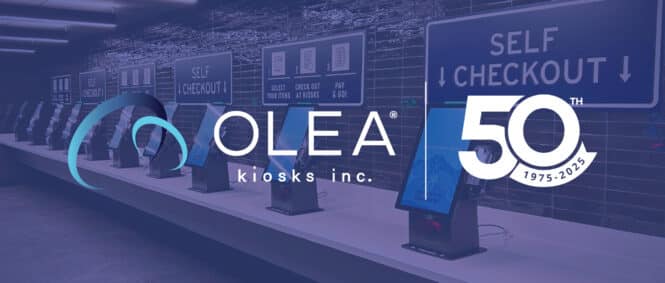
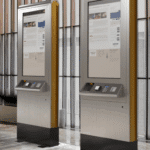
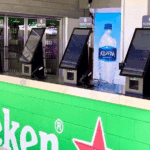
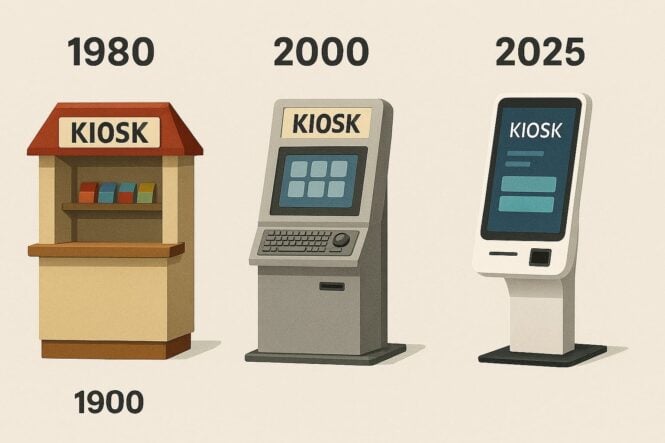

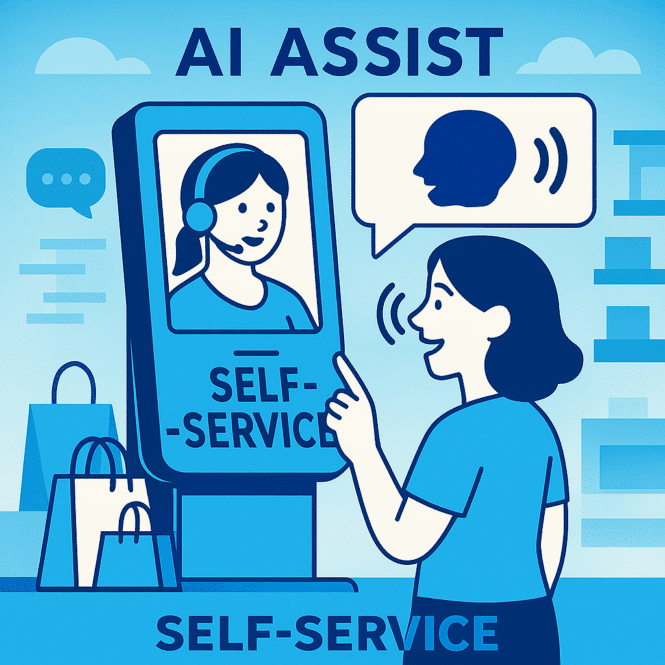

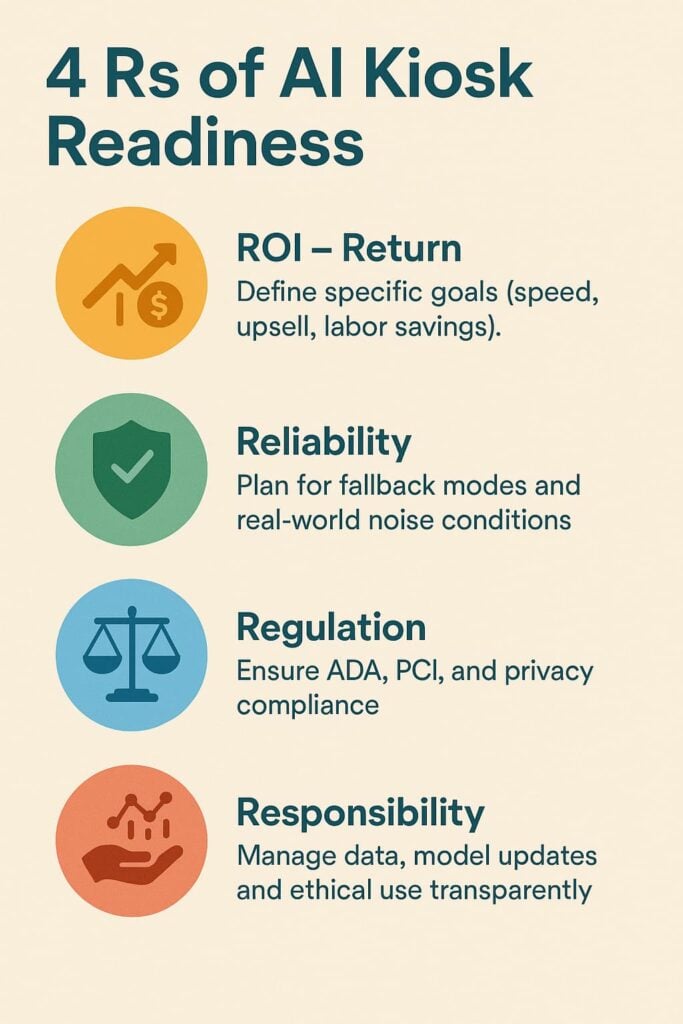

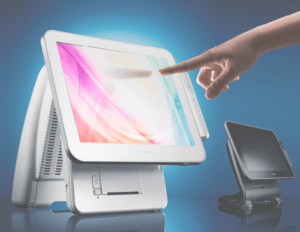



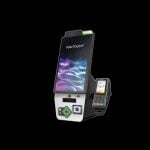

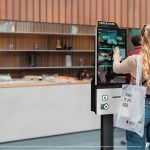
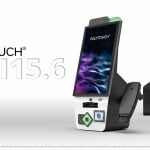
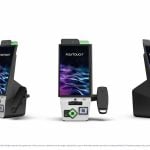
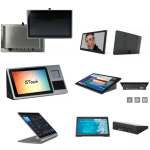
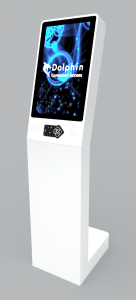
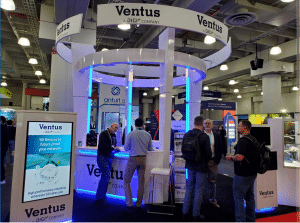
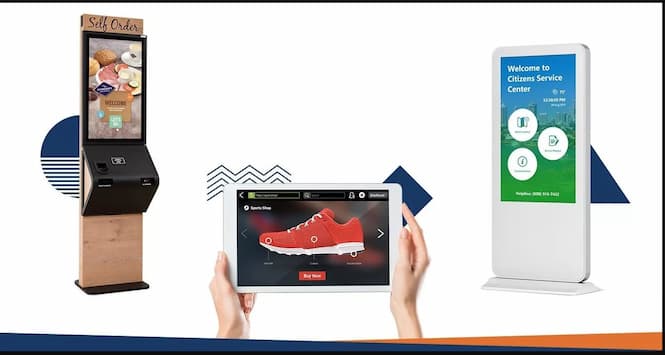
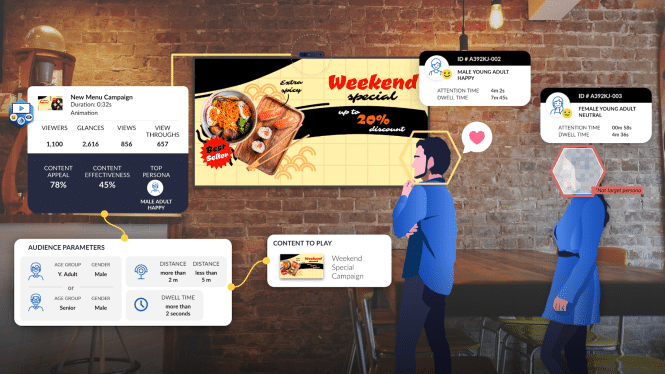
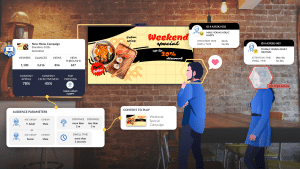



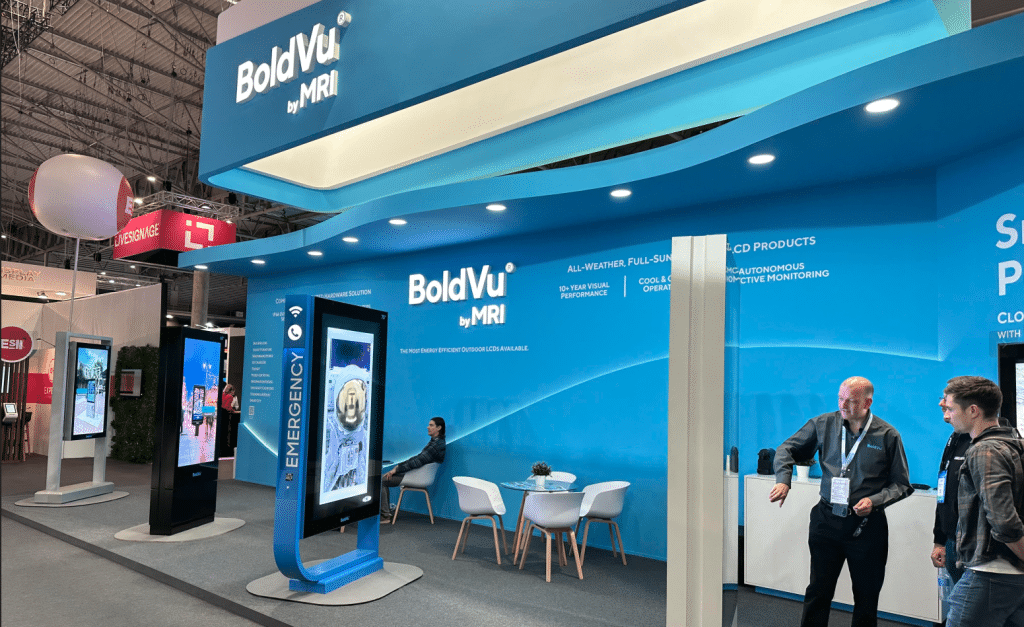
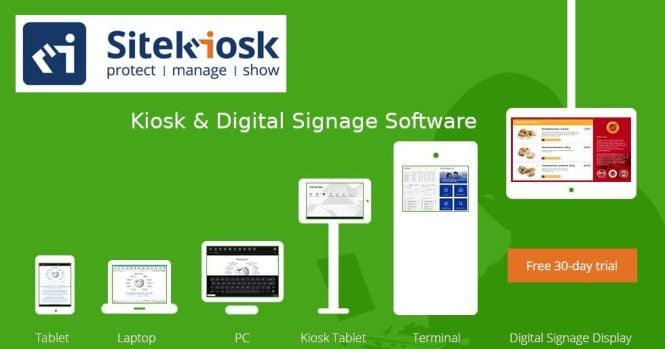



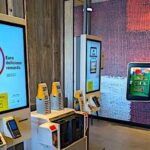

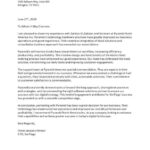

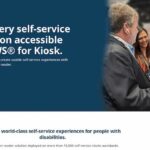
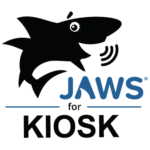
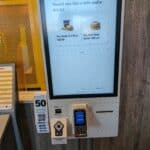

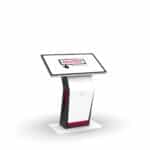
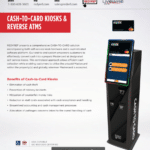
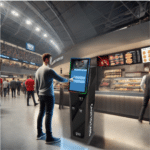
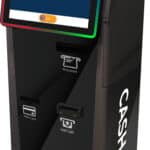
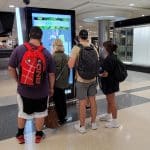
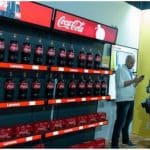

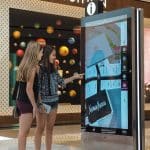
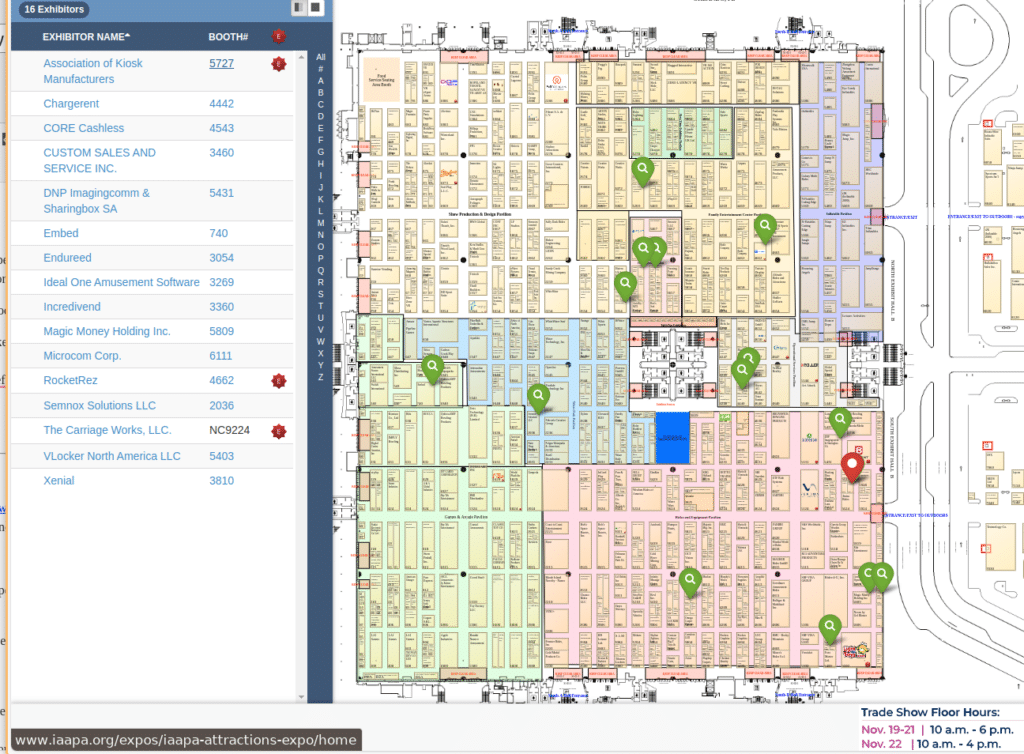
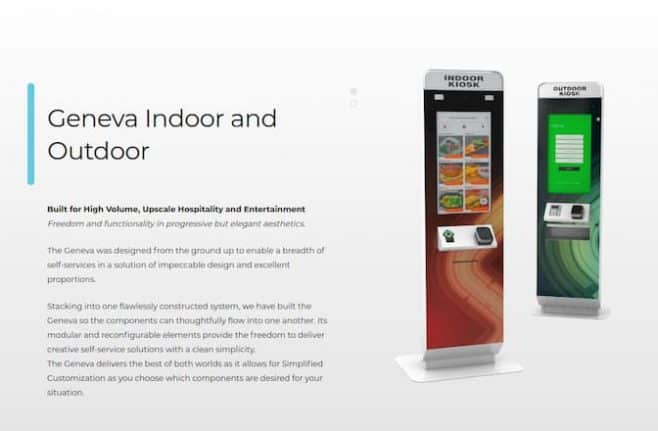
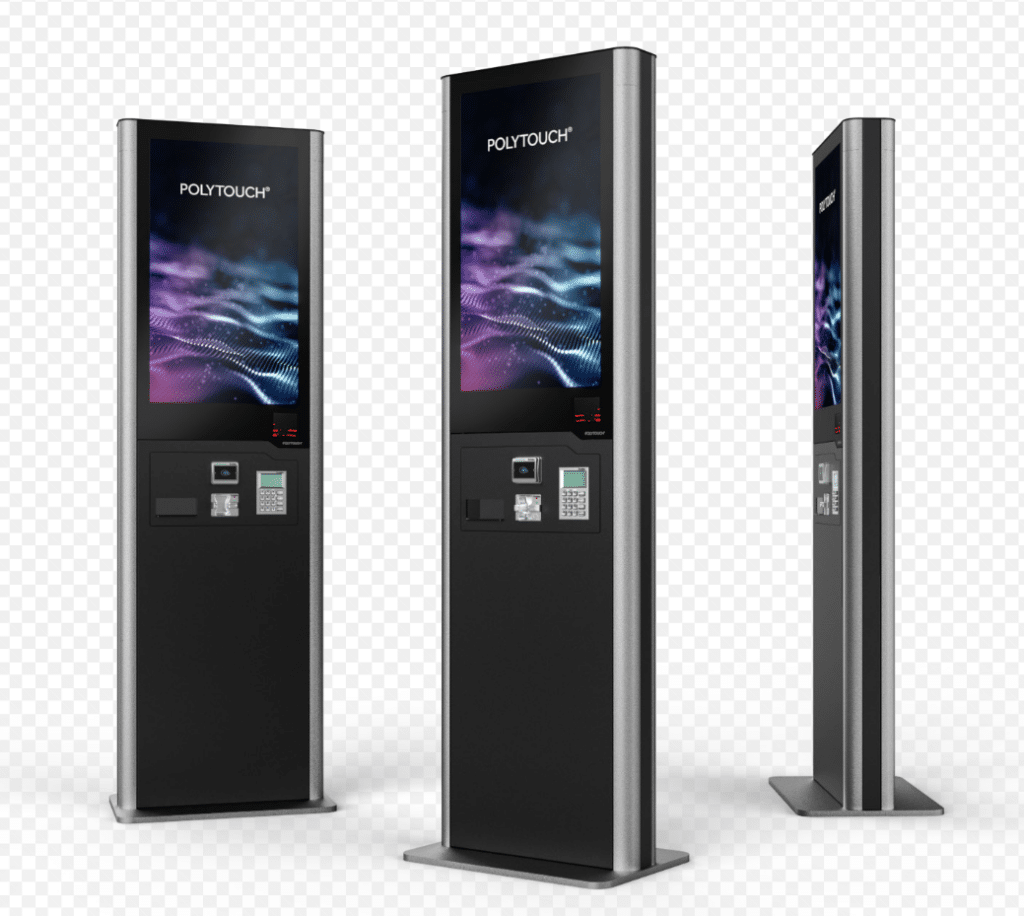
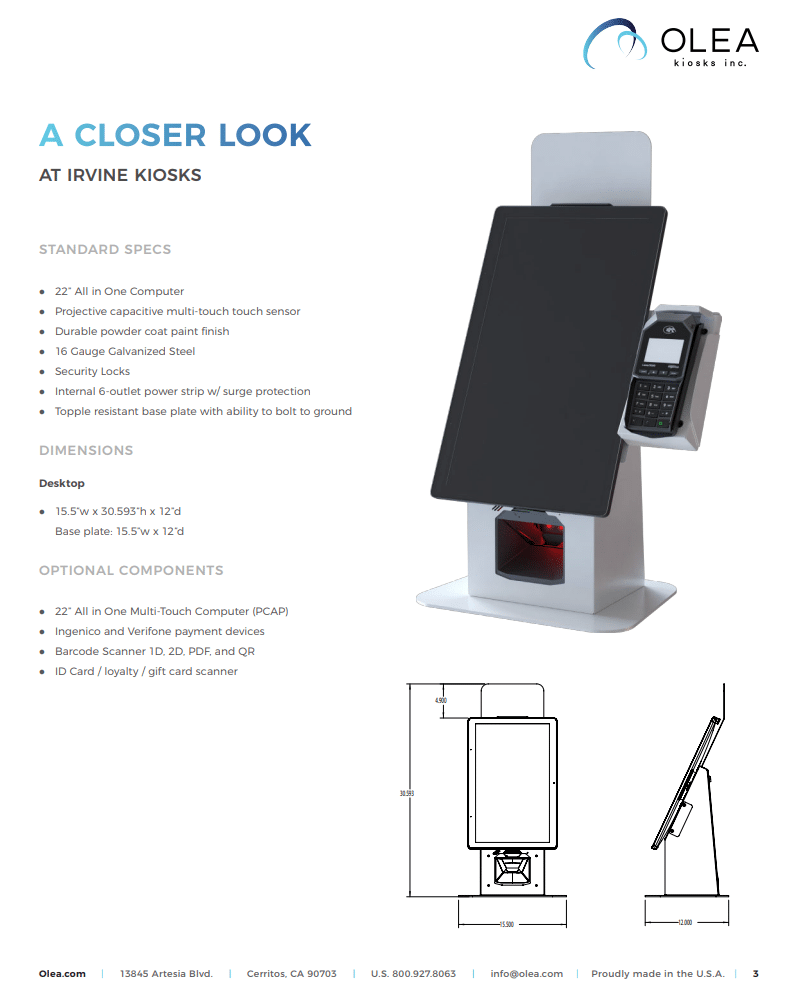
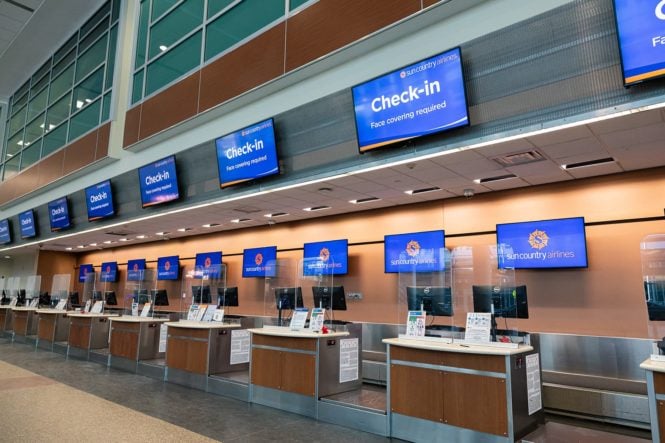


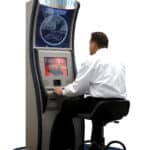

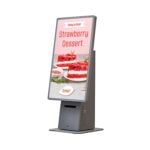


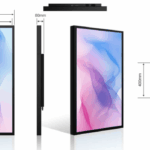
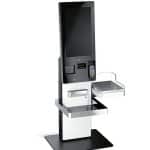
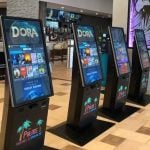




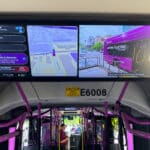
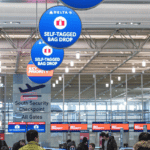
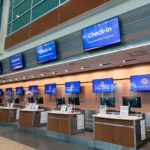

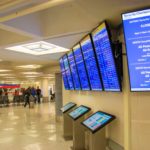


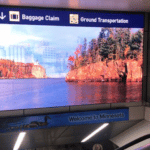
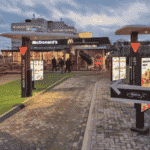
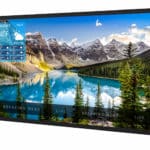

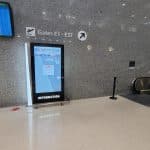
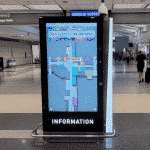
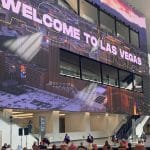



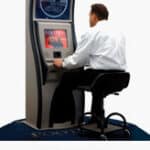
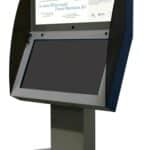
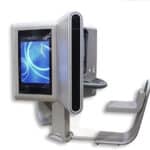
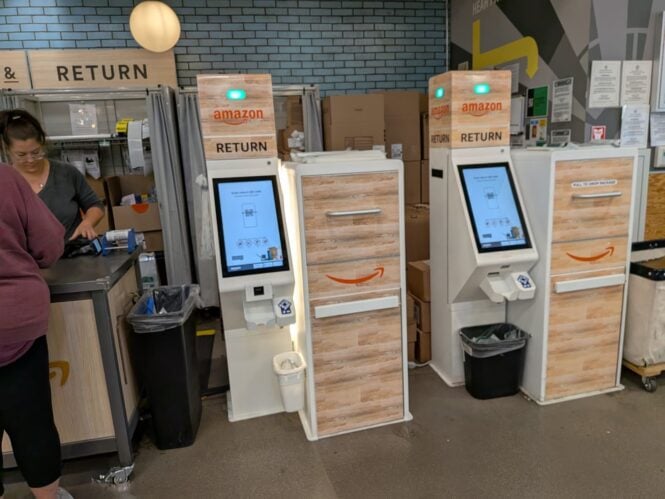
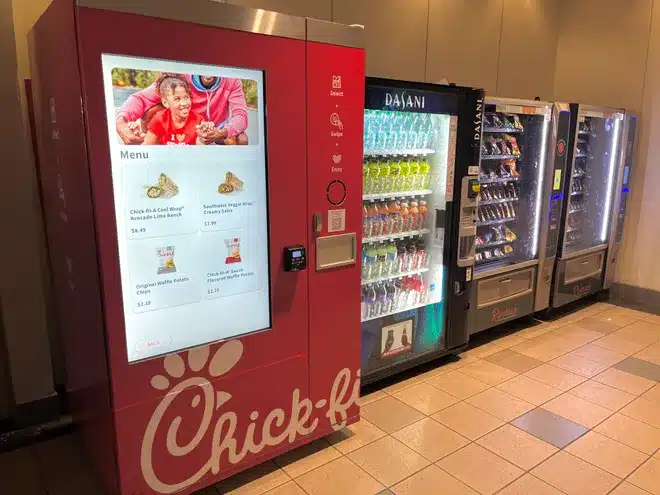
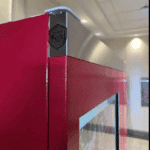
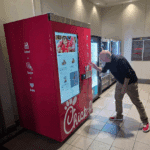
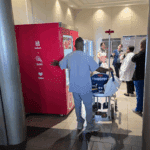
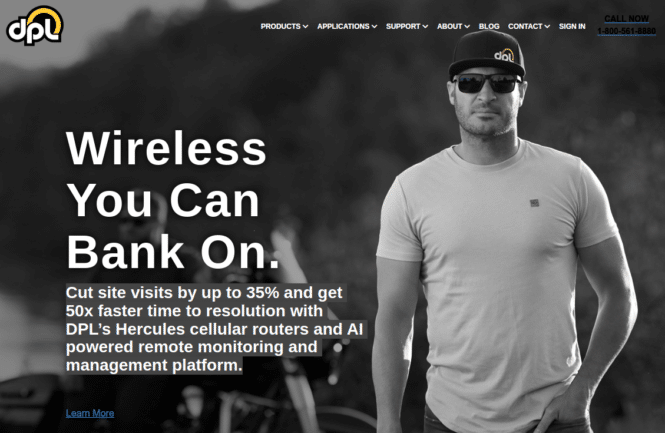


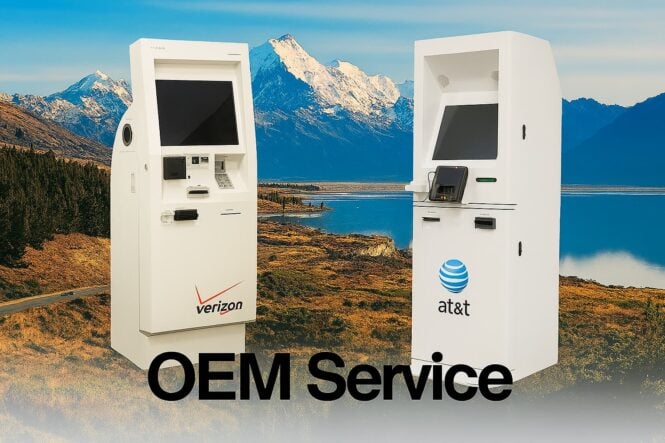
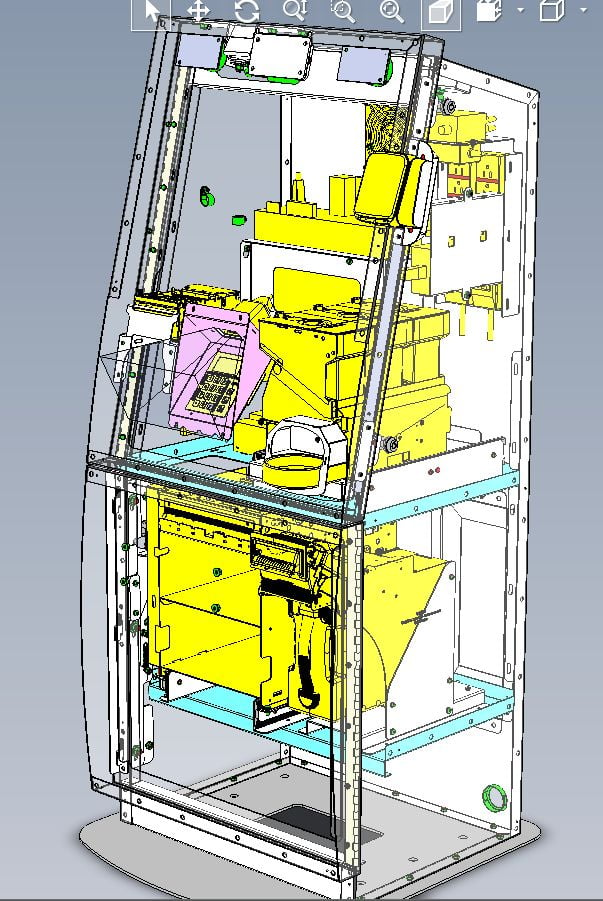
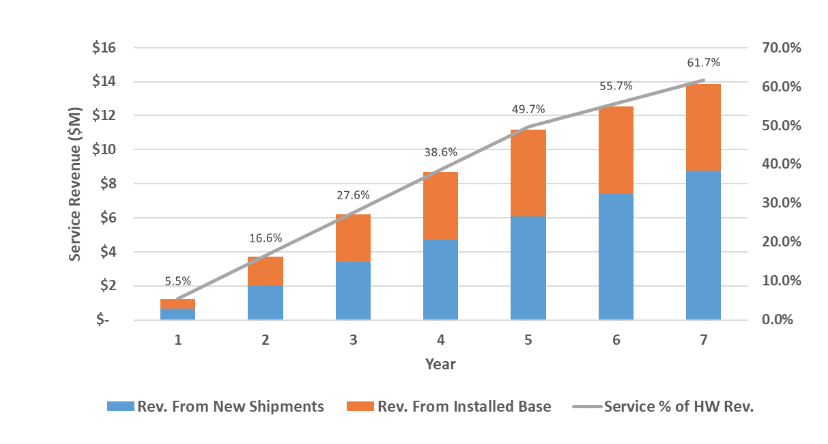

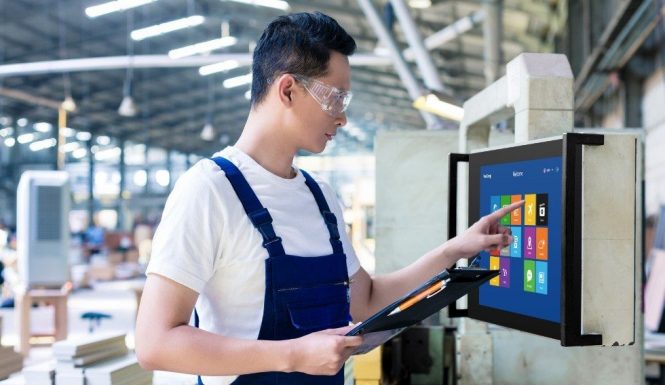
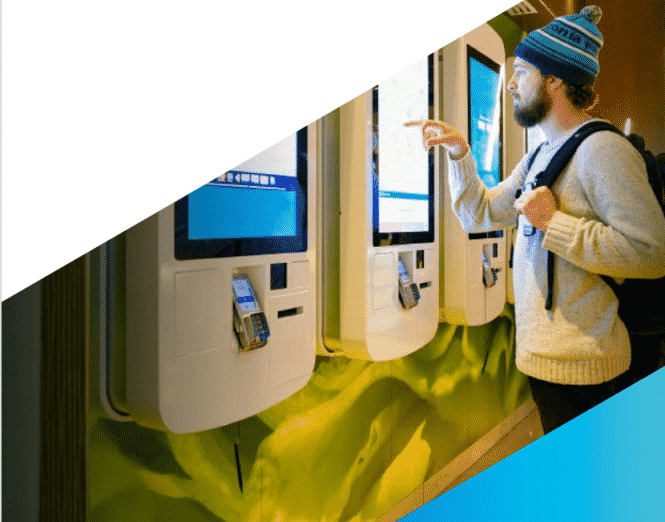













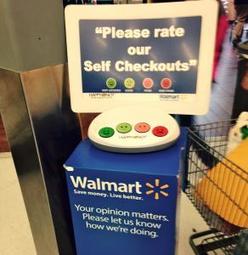
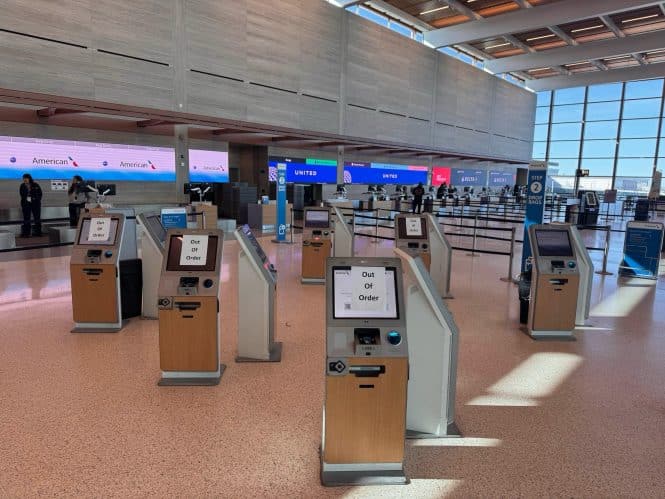

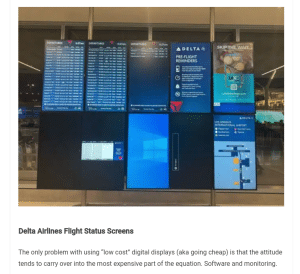
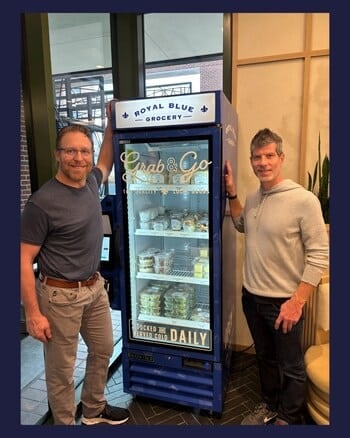
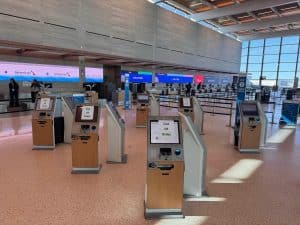
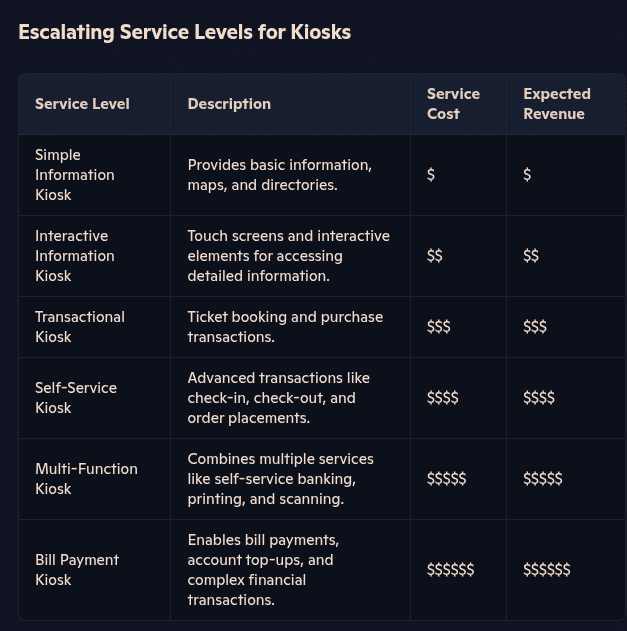




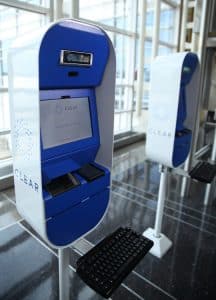
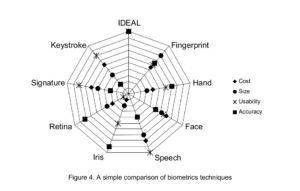
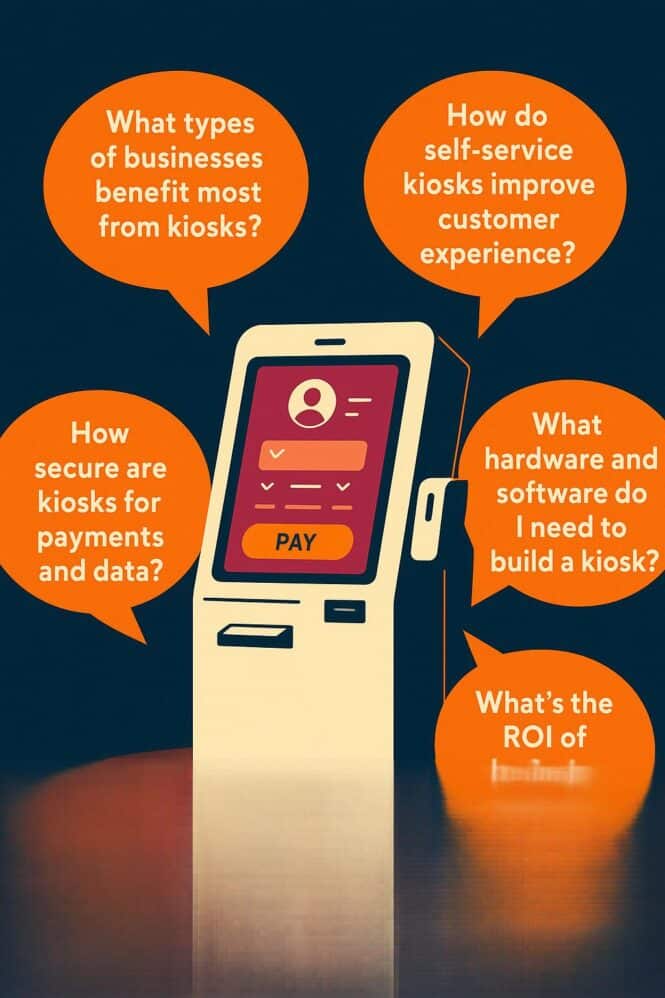

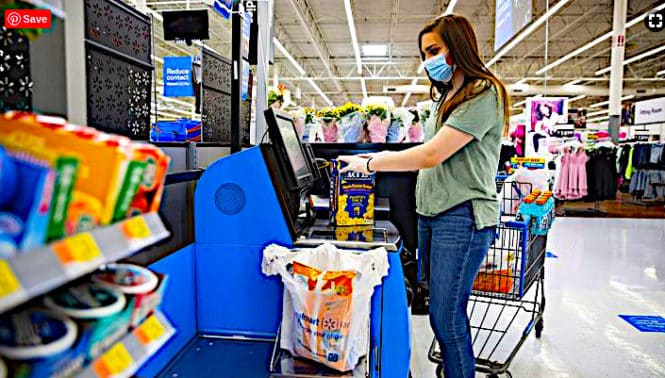
2 Comments Comments on Bruce Rasmussen’s article